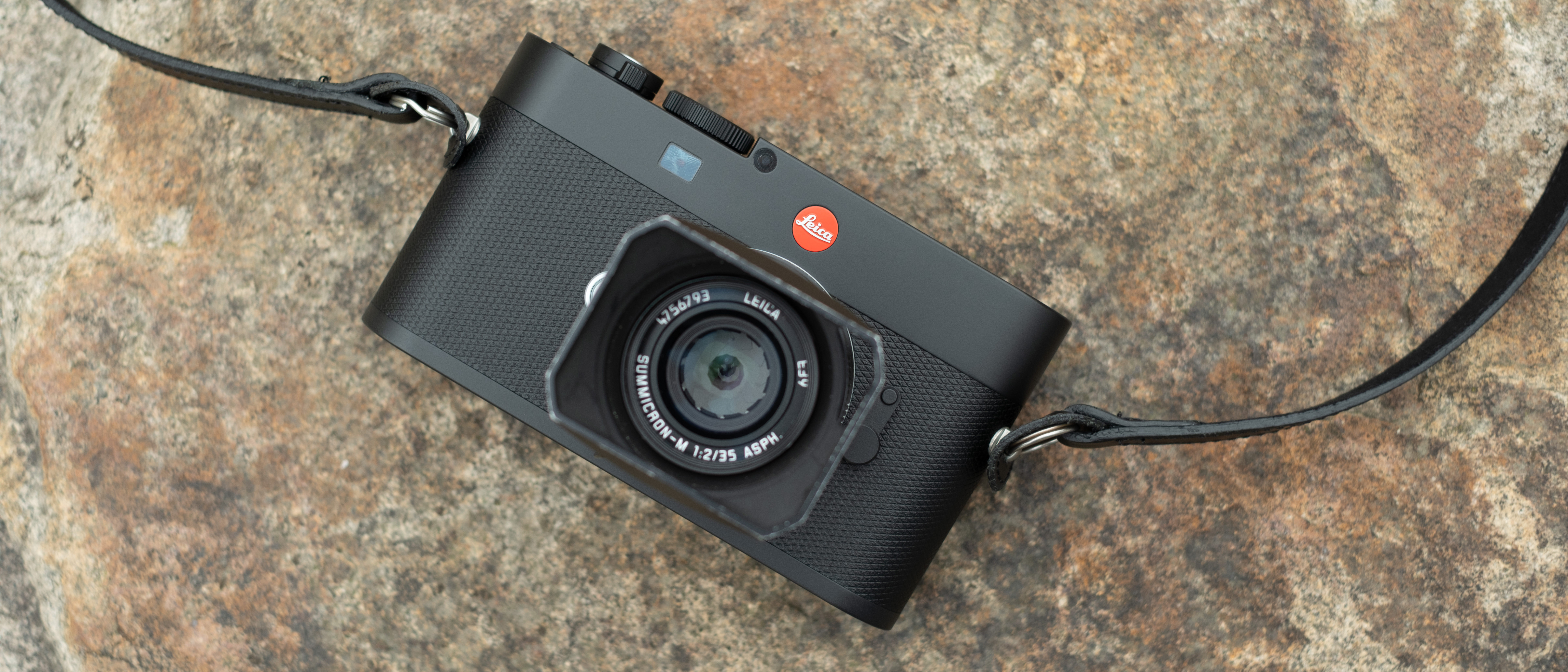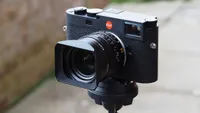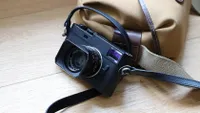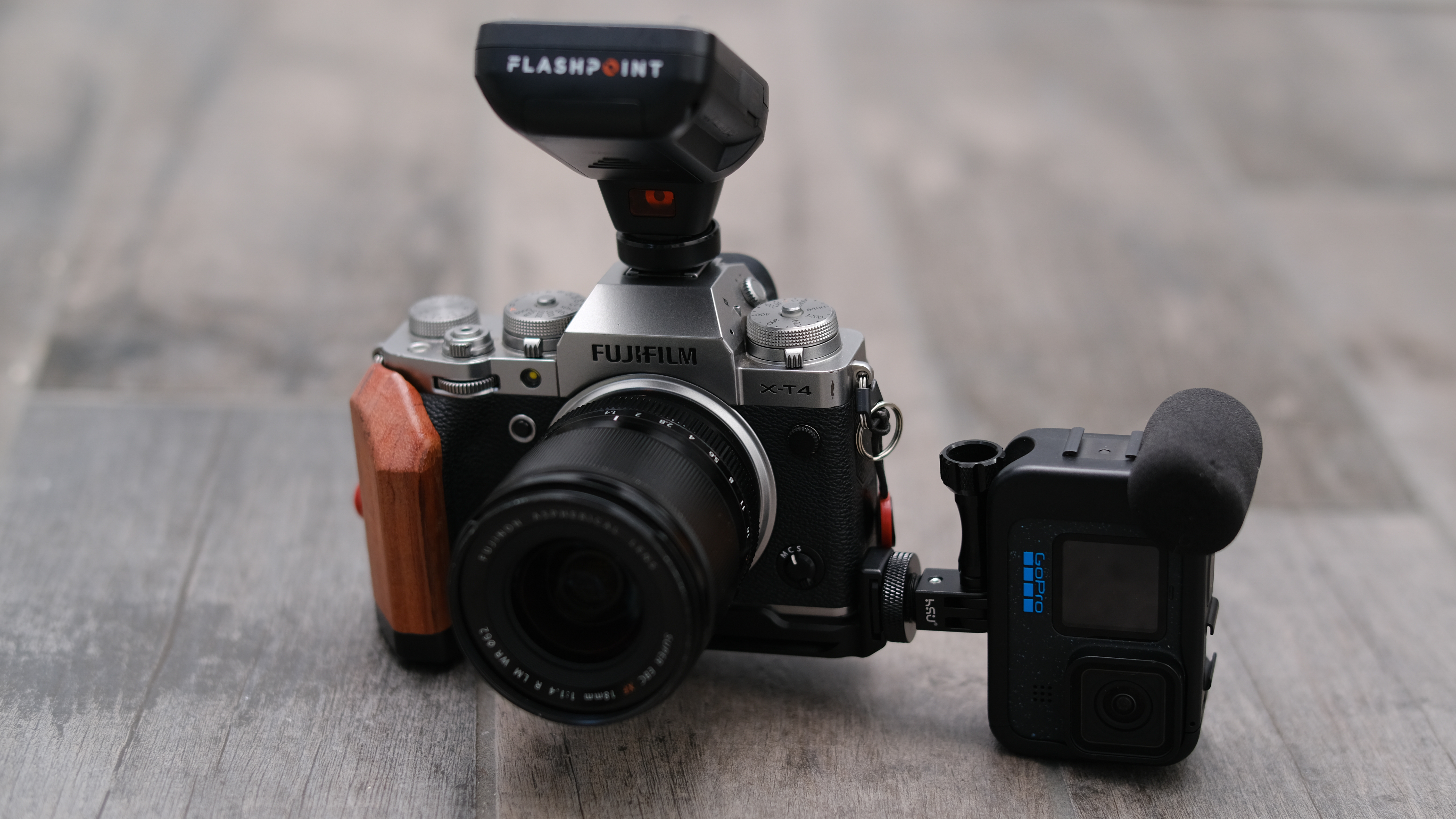Digital Camera World Verdict
M series purists might be incensed, but the Leica M EV1 offers a different interpretation of the M11, trading its optical viewfinder for a 5.7m-dot electronic viewfinder with up to 1.8x magnification, making precise focusing and real-time exposure preview much easier – especially for photographers with weaker eyesight. Image quality is identical to other Leica M models, thanks to the same 60.3MP sensor delivering excellent sharpness, color accuracy, and dynamic range with that classic Leica look. The design remains beautifully minimalist and luxurious, though the grip, or lack thereof, can feel uncomfortable over long sessions. However, its value is debatable compared to the more versatile, lower-priced Q3, which adds autofocus, video, and stabilization.
Pros
- +
Beautifully made, premium-feeling camera
- +
EVF makes focusing easier
- +
60MP sensor packs in plenty of detail
- +
Signature Leica color science and look to images
Cons
- -
EVF will change how some photographers shoot
- -
No image stabilization, no autofocus and no video
- -
Q3 offers much of the same experience (and more) for a lower price tag
- -
Expensive
Why you can trust Digital Camera World
The Leica M series features some of the most esteemed cameras of all time, having been used to take some of photography’s most recognized images, which has won it a cult-like following. And with such dedicated and impassioned fans, the pace of change has been deliberately slow and measured, with the swap from film to digital being the most significant change to the series in half a century of incremental refinement.
But right now, the M series is facing another momentous milestone with the introduction of the Leica M EV1 – the first M camera not to feature an optical viewfinder. Instead, the M EV1 will solely be relying on an EVF.
The M series is hallowed ground for street photographers, so it's definitely going to be divisive – but just remember this is an alternative to the Leica M11, not a replacement. And this is far from the first Leica camera to use an EVF; the Leica Q series is an incredibly popular rangefinder-style option that has never featured an optical viewfinder.
But for me, there is one nagging question. While there is a range of over 80 M-mount lenses, will the Leica M EV1 most likely just be used with either a 28mm or 35mm lens stuck permanently to the front? Therefore, with the OVF gone, I'd question if the better buy is a Leica Q3 or Leica Q3 43 – both of which offer a fixed lens but the same EVF and sensor, while adding so much more to the package with autofocus, video, and image stabilization – and for a lower price.
However, for the frequent lens changers out there or those who like the stripped-back simplicity and shooting experience of an M camera over the more complex Q – how does the Leica M EV1 compete with the other M11 cohort?
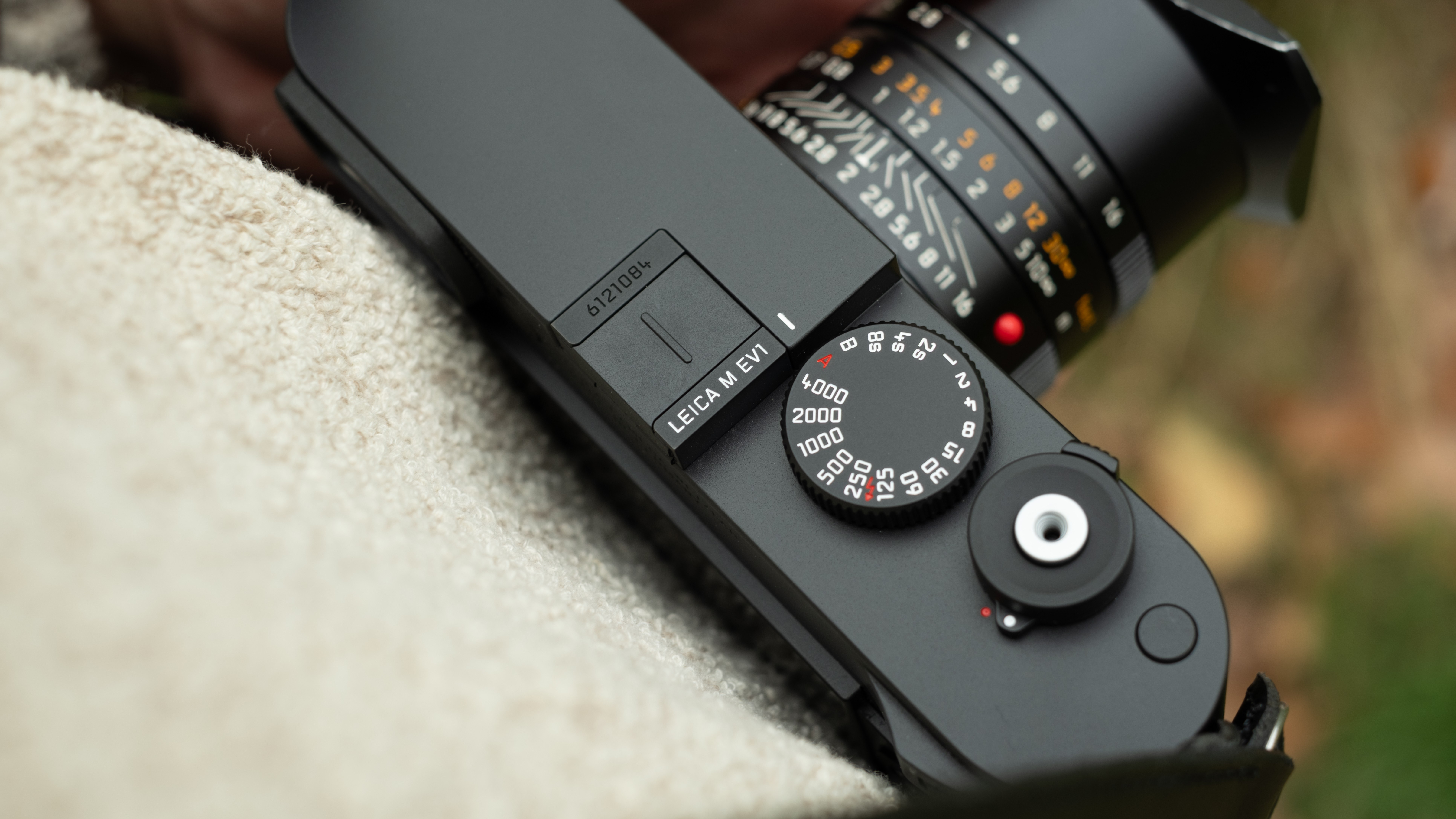
Leica M EV1: Specifications
Lens mount | M-mount |
Sensor | 60.3MP |
Processor | Maetro III |
ISO | ISO 64 - 50000 |
IBIS | No |
Continuous shooting | 4fps |
Video | No |
Viewfinder | 5.76m dot EVF, 60Hz, 0.76x |
Screen | 2.95" TFT, 2.33m dot |
Storage | 64GB internal SSD, 1x UHS-II SD |
Battery | BP-SCL7, 244 shots (approx) |
Weight | 484g (with battery) |
Leica M EV1: Price
This is Leica so, of course, the Leica M EV1 is still reassuringly expensive, costing $8,995 / £6,840 for the body only (Australian pricing to be confirmed). Although this is actually slightly below the M11 with its optical viewfinder, which costs around $/£1,000 more. It doesn’t exactly scream bargain, but it is a substantial saving if you are happy enough with an EVF.
There is also a hand grip with a matching leatherette cover for an additional $460 / £340, which might be worth looking into if you find the M EV1’s grip a little lacking, as I did.
The best camera deals, reviews, product advice, and unmissable photography news, direct to your inbox!
The camera is not yet available in the US due to waiting on Federal Communications Commission authorization, which has been delayed due to the government shutdown. Leica has a waiting list for US photographers to be notified upon availability.
Leica M EV1: Design & Handling
The elephant in the room with the Leica M EV1 is the new EVF. While I'm sure you'll find countless articles about Leica betraying the soul of its M rangefinders, I honestly find it hard to care. There are four other rangefinder M-series cameras you can buy from Leica right now if you want a pure M experience; try not to get too worked up over the existence of the M EV1.
The EVF itself is very good. It's a slightly slower EVF than the one used in the Q3, topping out at 60fps instead of 120fps – but it matches the 5.76m-dot resolution, and it's really very nice to use.
The only issue I had was that the lack of hood or protection around the EVF meant that it very easily picked up grease from my face or fingers – I also don't know how vulnerable it would be long term to scratches or other damage.
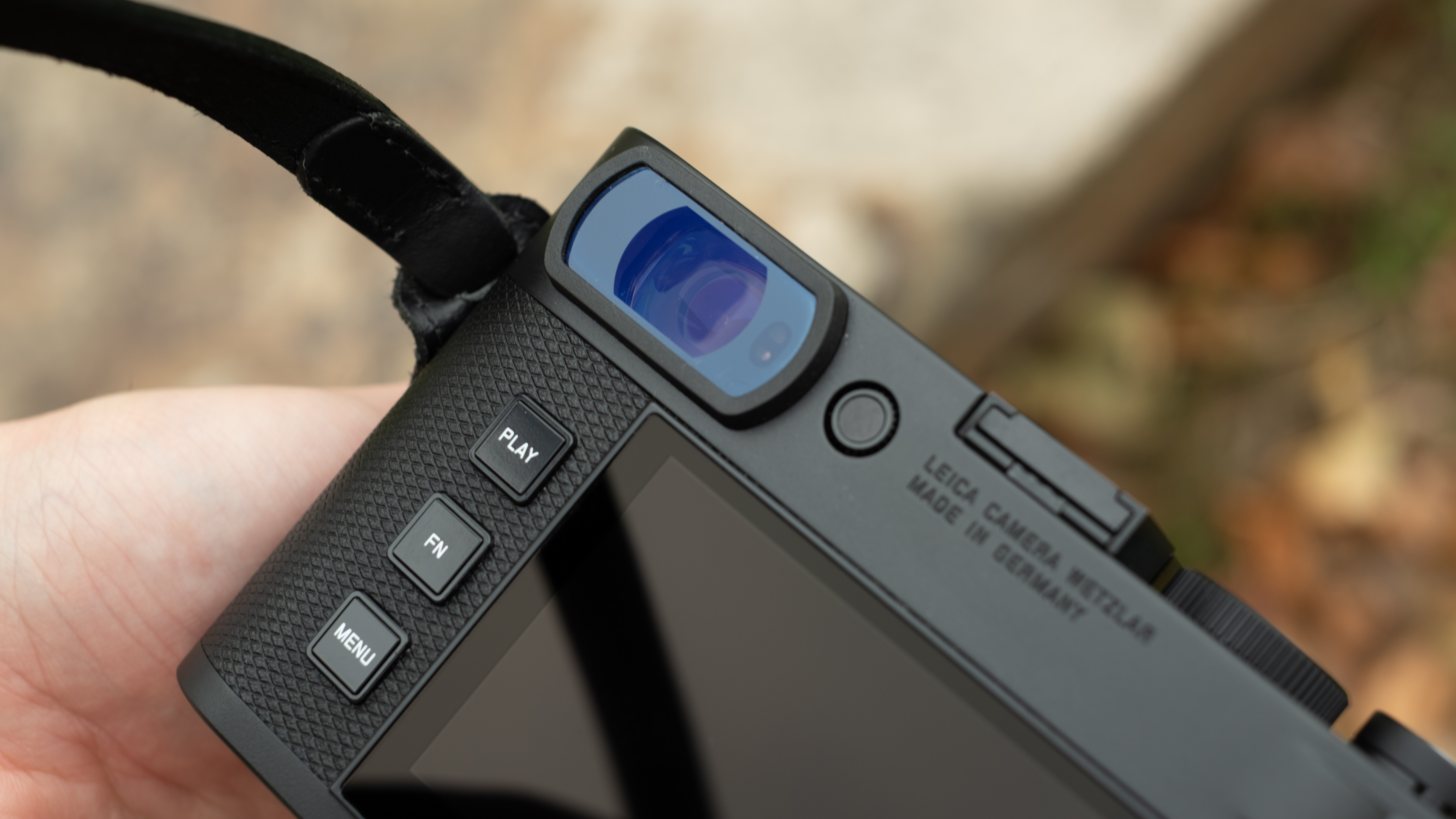
The main benefit of an optical viewfinder is the ability to frame a shot while still seeing a little of what's happening around the frame. You do lose that with the EVF, which only shows the area that will be captured in the image – and for many street photographers, this will be too invaluable to your process to let go of. But if that is your preferred way of shooting, Leica’s optical M rangefinders aren't going anywhere.
But the EVF has some significant benefits that I think probably outweigh the arguments for a traditional OVF. Look, we can't all zone focus flawlessly, so having a clear screen for focusing is a godsend for manual focus cameras – especially for anyone whose eyesight might be poorer.
The EVF enables you to magnify the screen by either 1.3 or 1.8 times, and get in close to nail perfect focus. You can also adjust the screen by -4 and +2 dioptres to accommodate different vision impairments. The EVF (and rear screen) also support Leica’s focus peaking, which highlights the in-focus area with a particular color to aid focus.
The other EVF benefit is you can see exactly how your image will look, live in the viewfinder – and correct flaws in exposure on the fly rather than through trial and error or in post. Commendations for anyone who has never missed an exposure but, for many of us, a little assistance sometimes doesn’t go amiss.
I usually use a Fujifilm X100VI and its hybrid viewfinder. And as much as I love the optical element, if I’m risking missing a shot, I regularly switch it to the EVF to make sure that I'm nailing everything before the chance is gone.
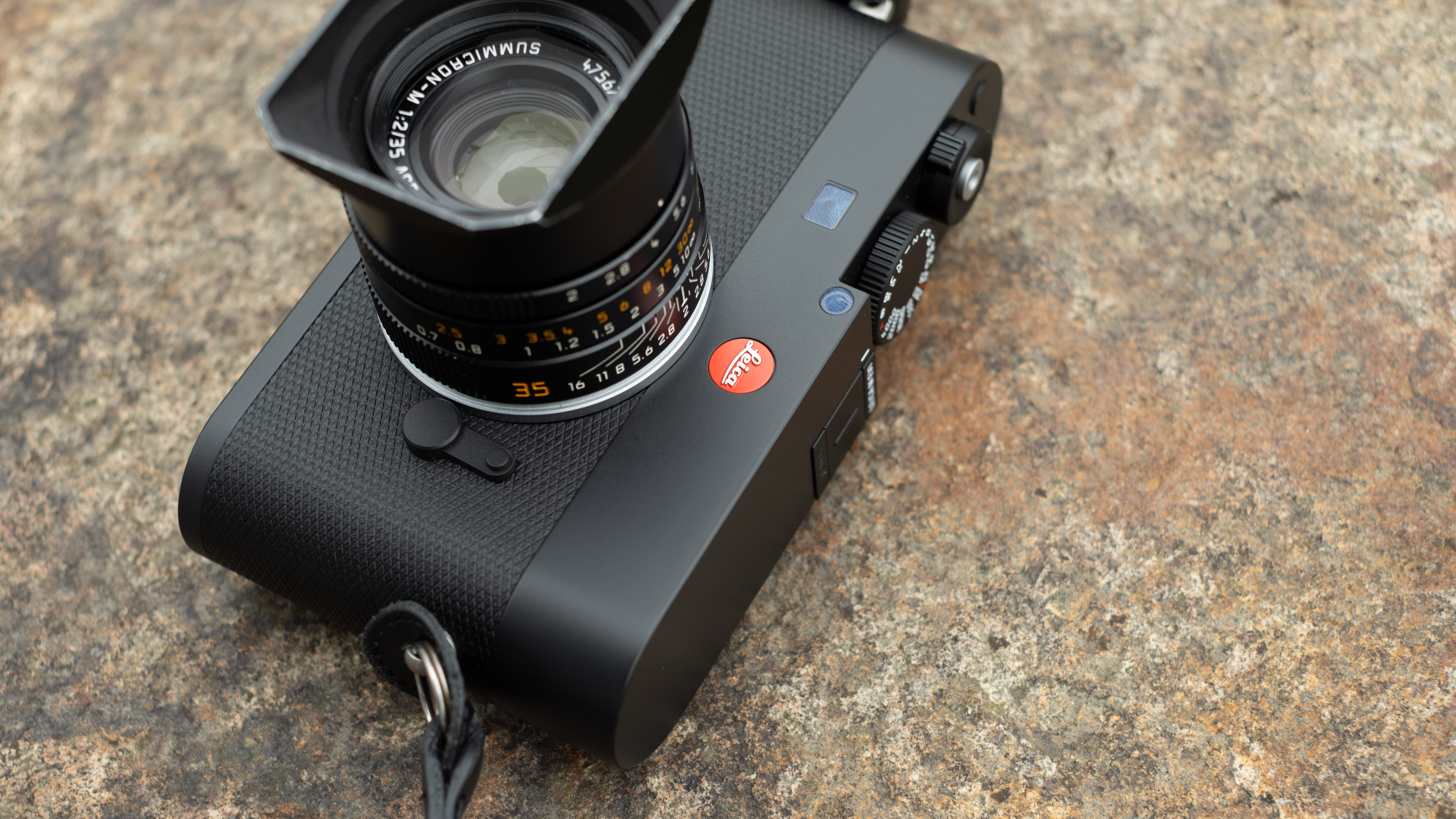
Lastly on the EVF, who am I to criticize Leica design, but I do wish Leica had moved the logo to the big gap where the viewfinder used to be. Traditionally, the Leica dot does sit in the middle of the M series cameras – and that’s where it is on the EV1 – but I almost feel the open space draws attention to the fact that nothing is there. It’s a change made on the Q3, although perhaps this is a subtle way to visually separate the two models.
Apart from the missing viewfinder on the front, the Leica M EV1 is pretty hard to tell apart from the rest of the M11 cameras. Although that’s not a complaint. It features the same beautifully designed magnesium and aluminum body with a leatherette cover – it's one of the most luxurious cameras I have handled (although to be expected at the price).
It comes in regular black only, with no silver brass version as of yet. The Leica M EV1 is also slightly lighter than the M11, weighing 484g against 530g.
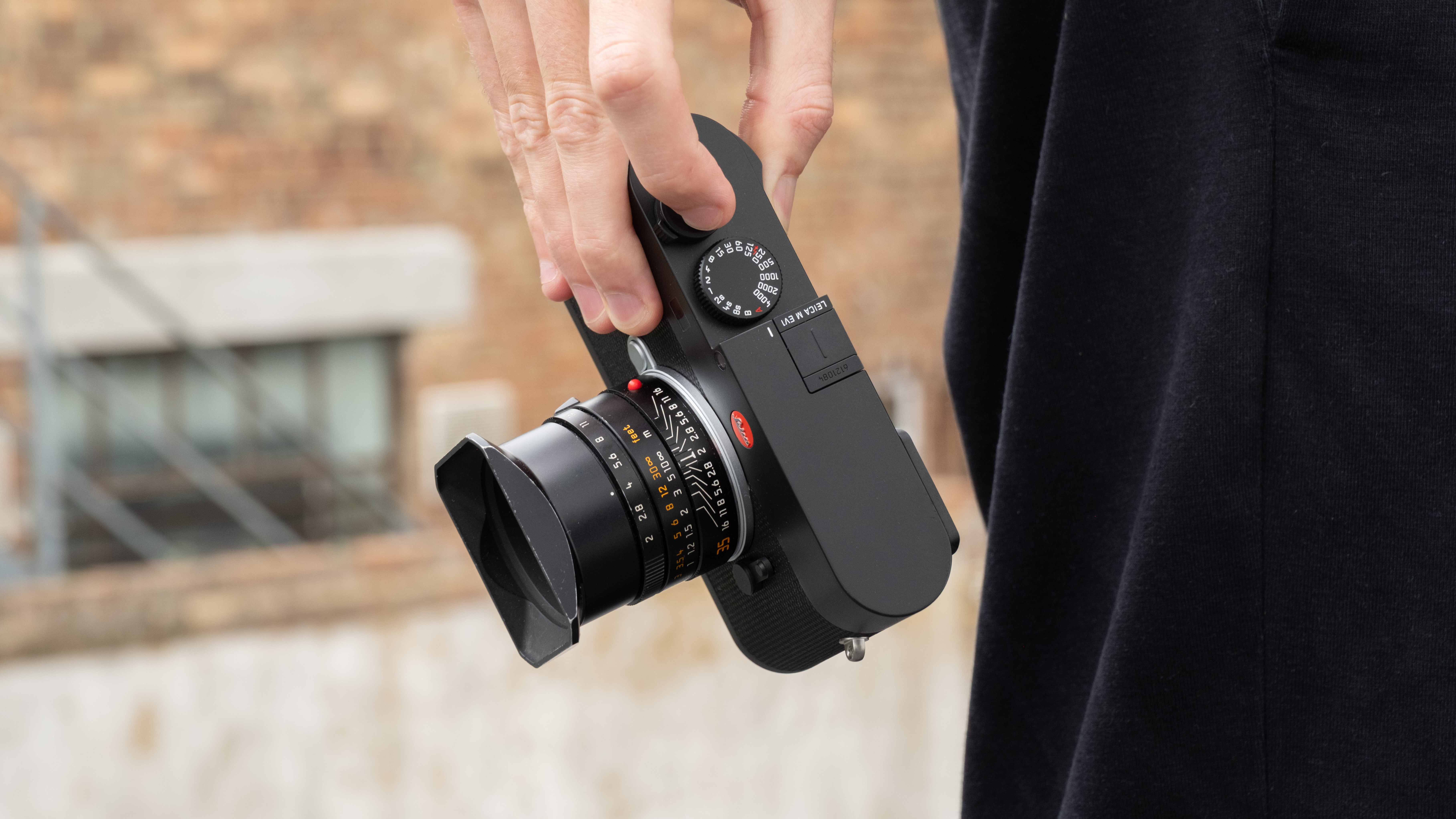
As beautiful as the camera is, I found handling a little bit of an issue (as I have with other Leica models). There is a small nub of a thumb grip on the rear of the camera, but the camera has no front grip, so it's not the most comfortable to hold for long periods one-handed.
It rested a little too much weight on my pinky finger supporting the camera, which became uncomfortable after a time. You can buy an optional grip from Leica, but this will set you back an additional $460 / £340.
Like previous models, the battery is accessed via a switch on the bottom, which pops the battery out but requires a little further press to unlock the mechanism. It's a clever way of doing it without having a battery cover or door, and it's quick to get used to.
However, the USB-C charging port is on the base of the camera, which means it can't sit flat when being charged, which is a bit awkward and leaves the camera either balancing precariously on the end of the charging cable, or you have to lay the camera down on its screen.
The single SD card slot is also behind the battery, which means the battery has to be taken out each time you want to remove the SD card. This is a minor annoyance but, again, it enables the M EV1 to keep its clean lines without accommodating a separate SD slot door.
The Leica M EV1 does, however, come with 64GB of built-in SSD storage, which is easily accessible via the Leica Fotos app or USB-C – so you might not need to take the SD out as often. However, I still find the easiest and fastest way of accessing my images is just putting the SD directly into my MacBook’s reader.
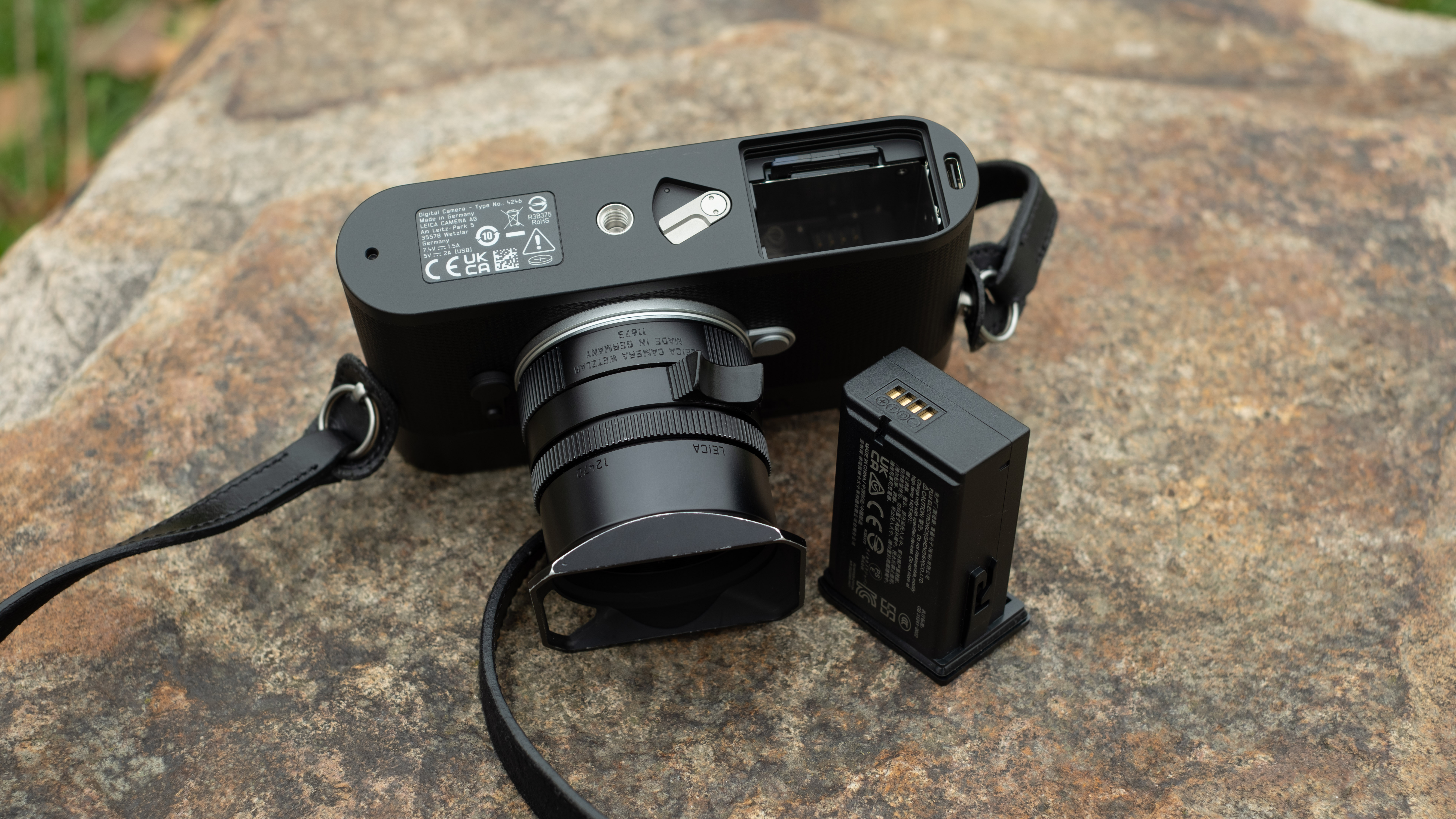
Leica M EV1: Performance
The Leica M EV1 packs in a 60.3MP sensor, but employs the company's Triple Resolution tech to shoot either 36.5MP or 18.4MP images using the whole sensor area for smaller RAW (DNG) or JPEG files, with DNGs ranging from approx 120-20MB depending on the size and JPEGs floating between around 30-5MB.
The camera can also make use of digital cropping modes during capture, which crops in either 1.3x or 1.8x, saving the cropped image as a JPEG, but the DNG as the full uncropped file – with the crop data accessible in editing software like Lightroom. When using the crop mode, the camera displays a box in the EVF or on the screen to show the cropped area.
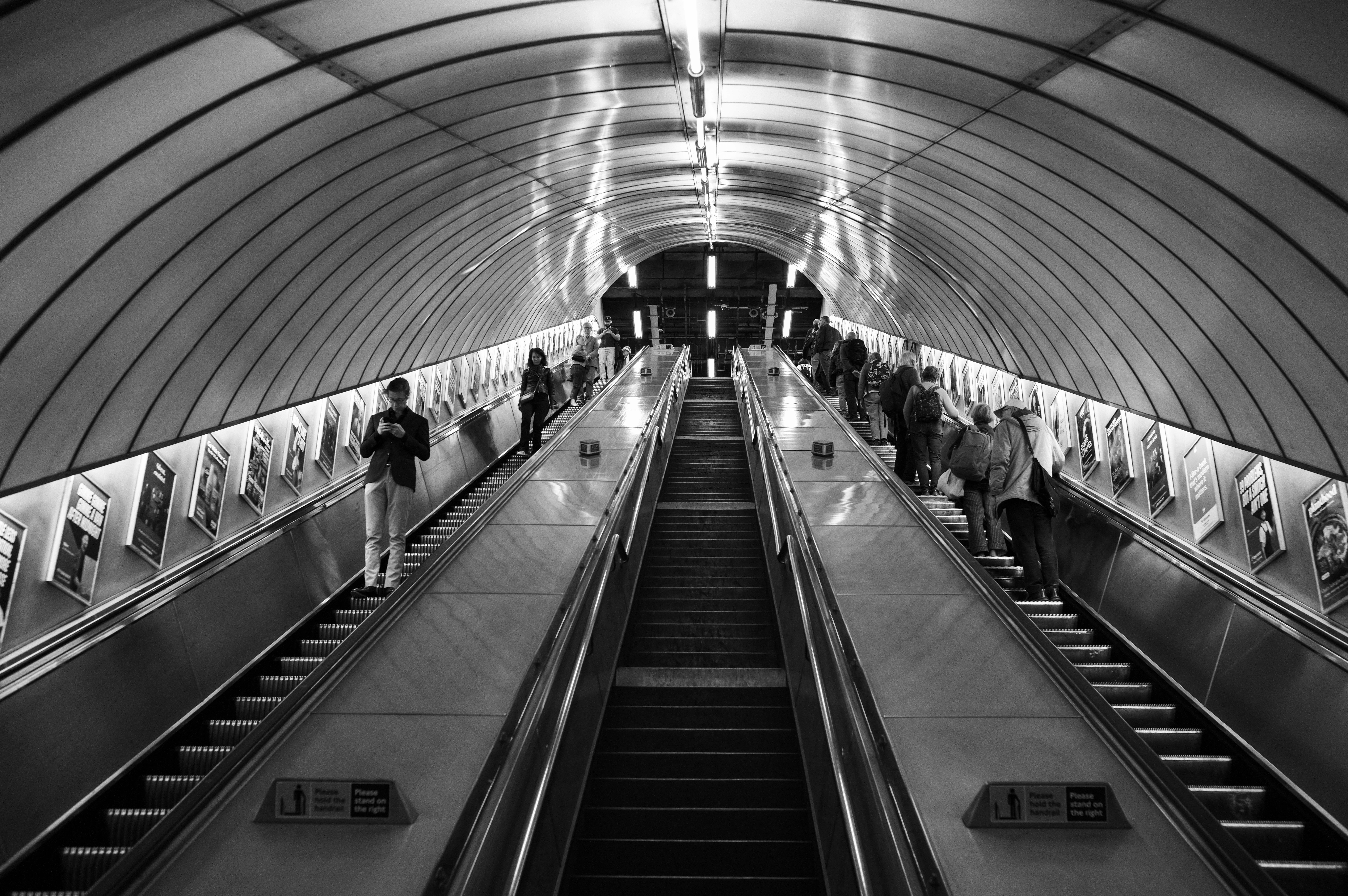
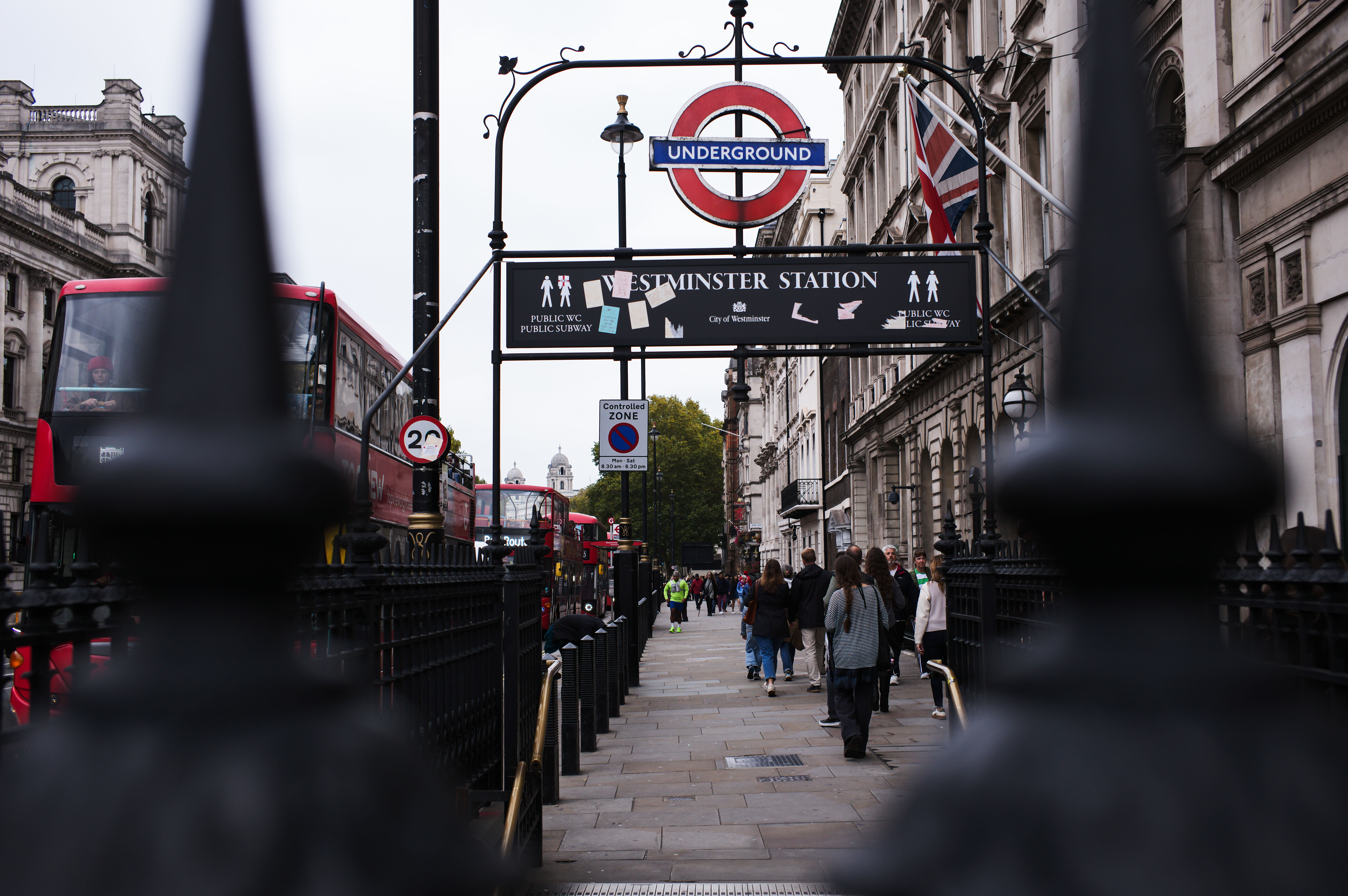

Photo performance is excellent, sharpness (when focus is perfectly nailed) is very good, especially in large images, which have a lot of cropping potential. The dynamic range is also very impressive, with a good amount of scope in RAW files to pull detail out of the shadows or highlights.
ISO performance is also very good; I was comfortable shooting up to ISO3200 without being concerned about grain, with it only starting to become visible from 6400 onwards.

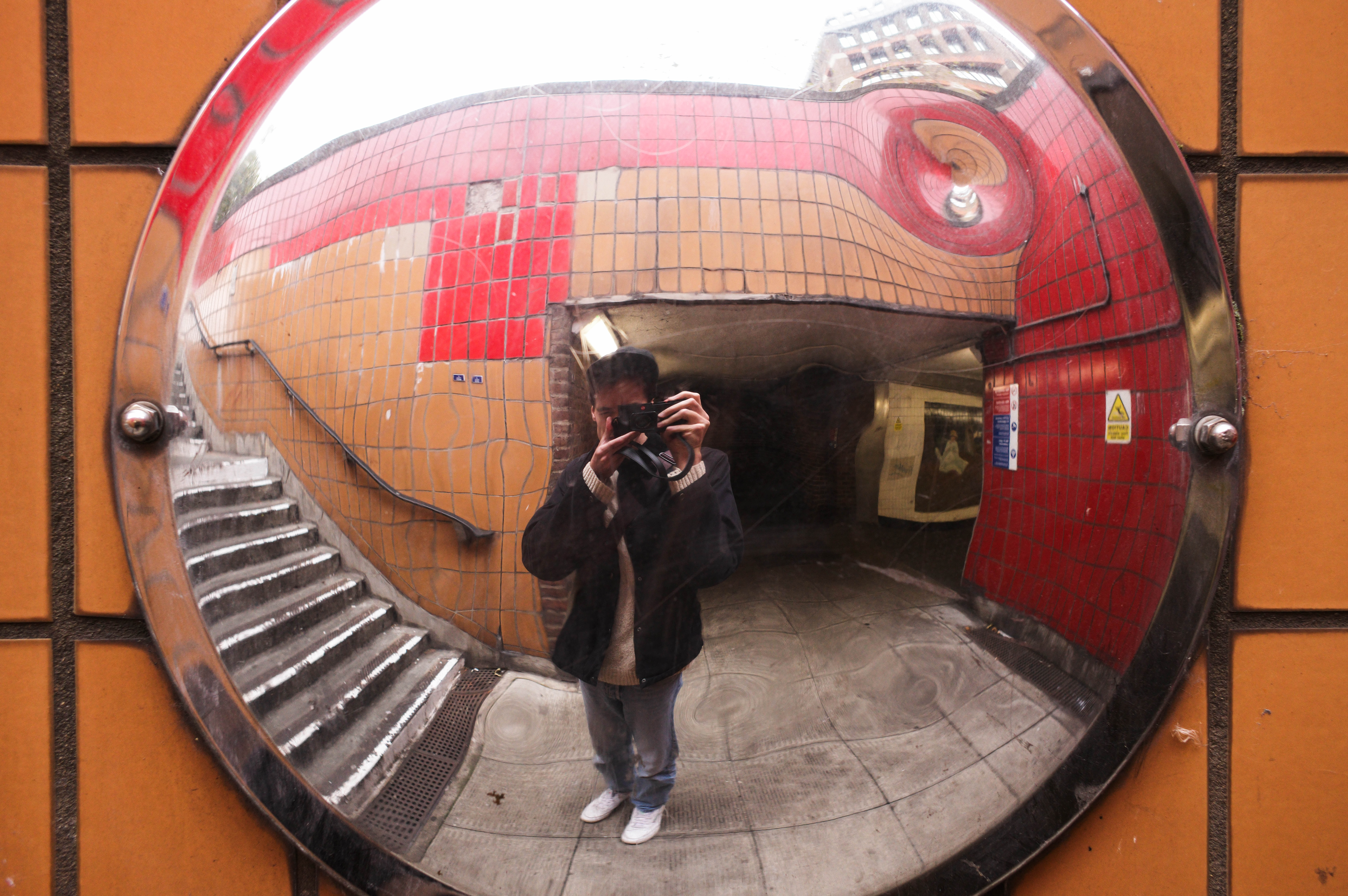
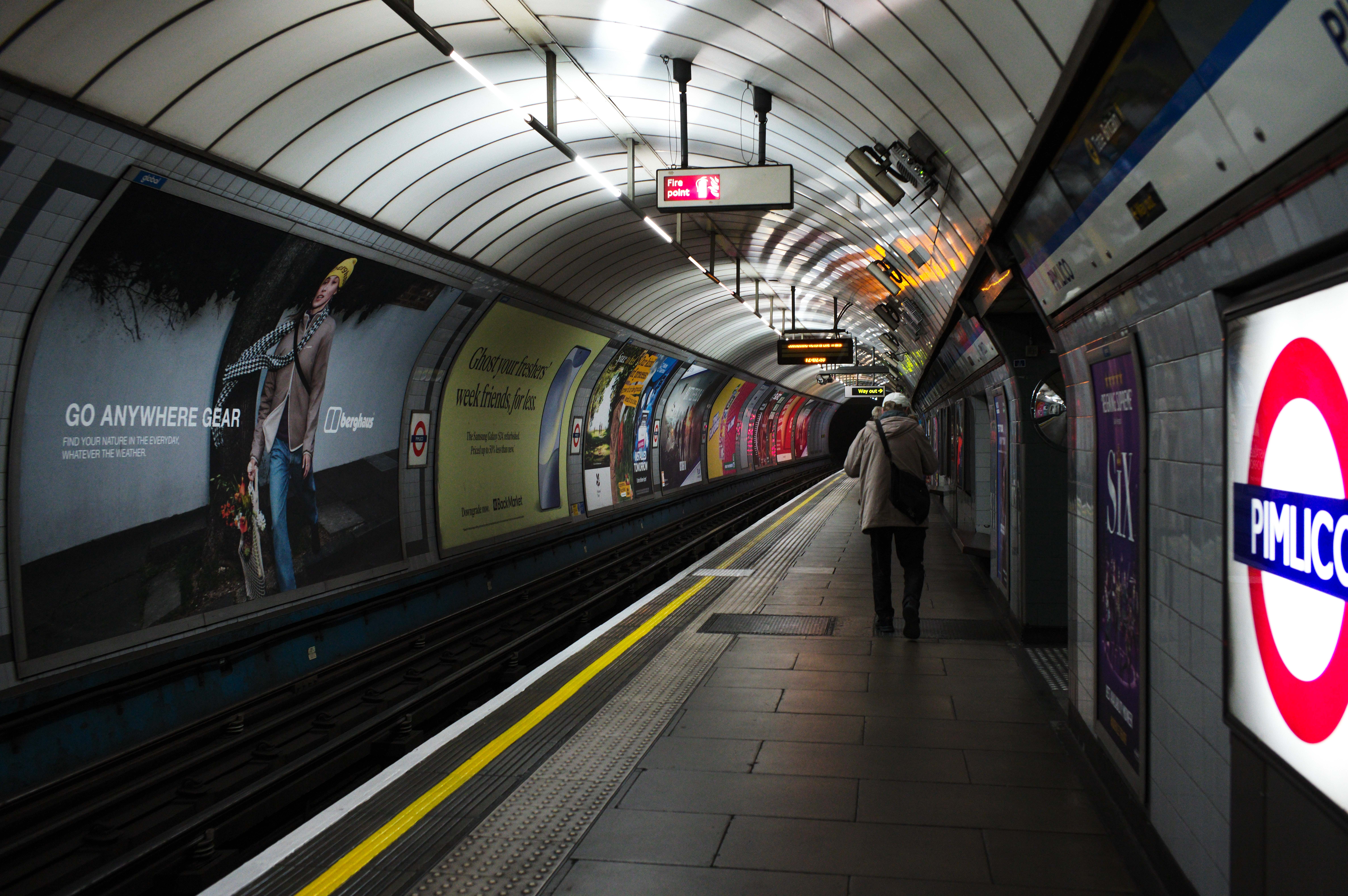
There is no mistaking photos from the M EV1 as being distinctly "Leica". Leica images have their own look, more contrasty, that leans a little more into cooler tones with accurate but bold colors.
The Summicron-M 35mm f/2 Asph lens I was using renders photos with a distinct subject separation, with the kind of unique bokeh these lenses are renowned for. This is down to the lens, but vignetting was a little bit of an issue wide open – though these were easily cleaned up in Lightroom – and I am sure many would argue that it adds more character to the images.

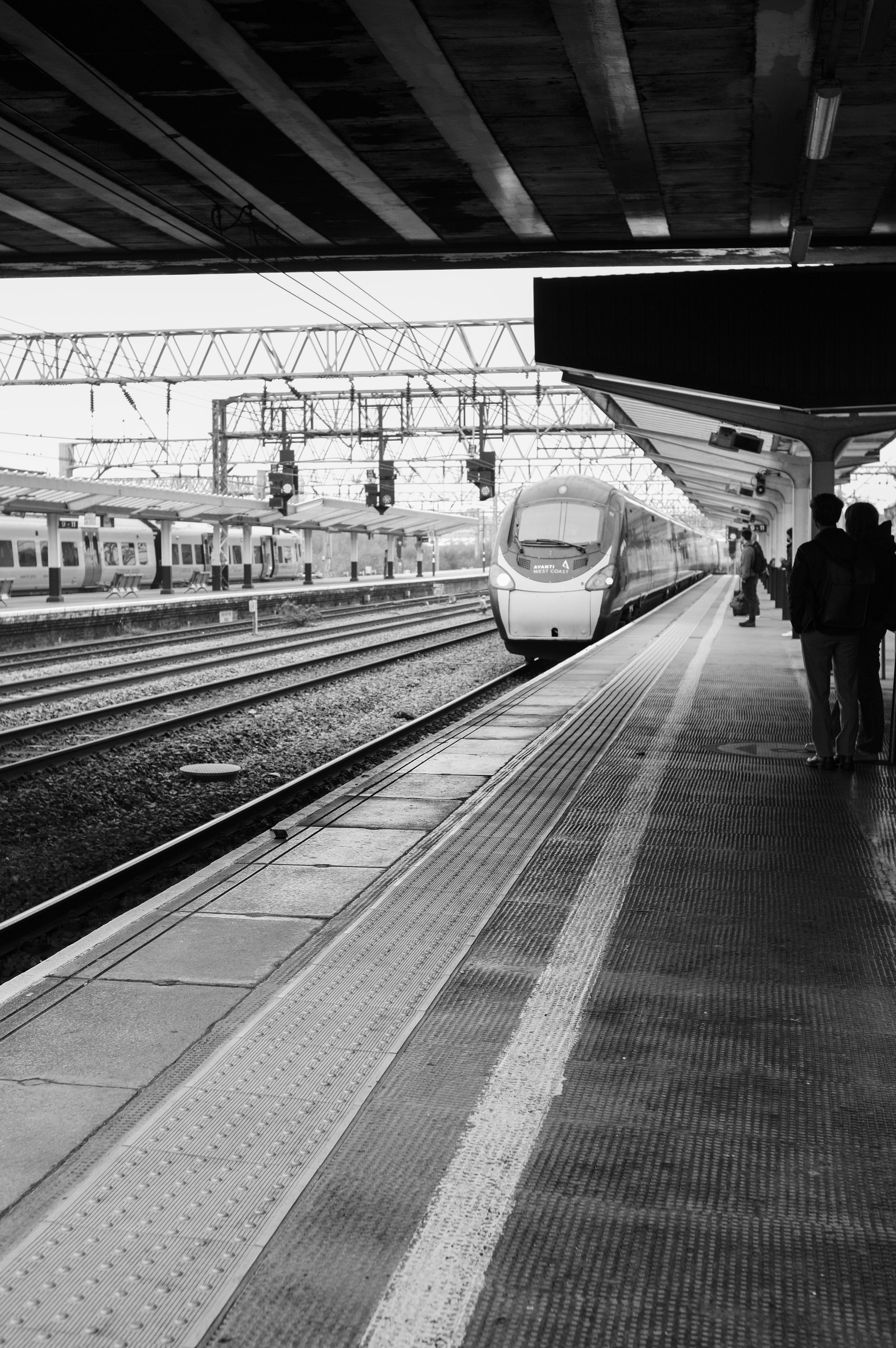
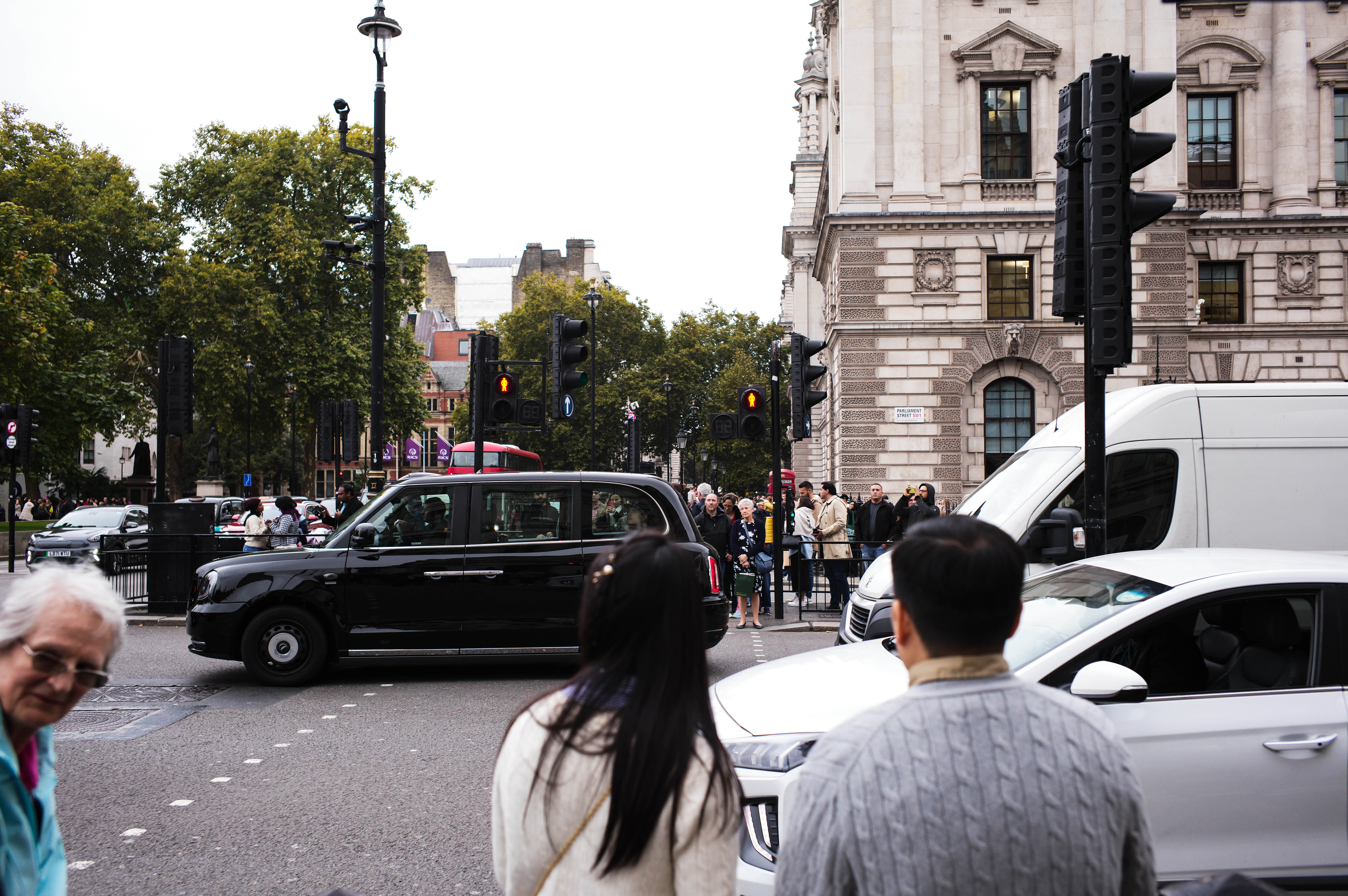
I shot most of my images in either the natural profile of the camera, which I found the most balanced for color, or Leica’s high-contrast monochrome setting for punchier black-and-whites. But the camera has other profiles for different looks for different tastes, including a more colorful Leica Vibrant and a more neutral Leica Monochrome.
Battery performance is acceptable but, rated at 244 shots via the LCD, or 237 shots using the EVF, longevity isn’t its strongest suit. However, the nature of the Leica M EV1 and its manual focus lens made me a bit more careful about how I was shooting, which actually meant the battery lasted easily through a day of wandering around London shooting – but heavier shooters might want to carry a spare.
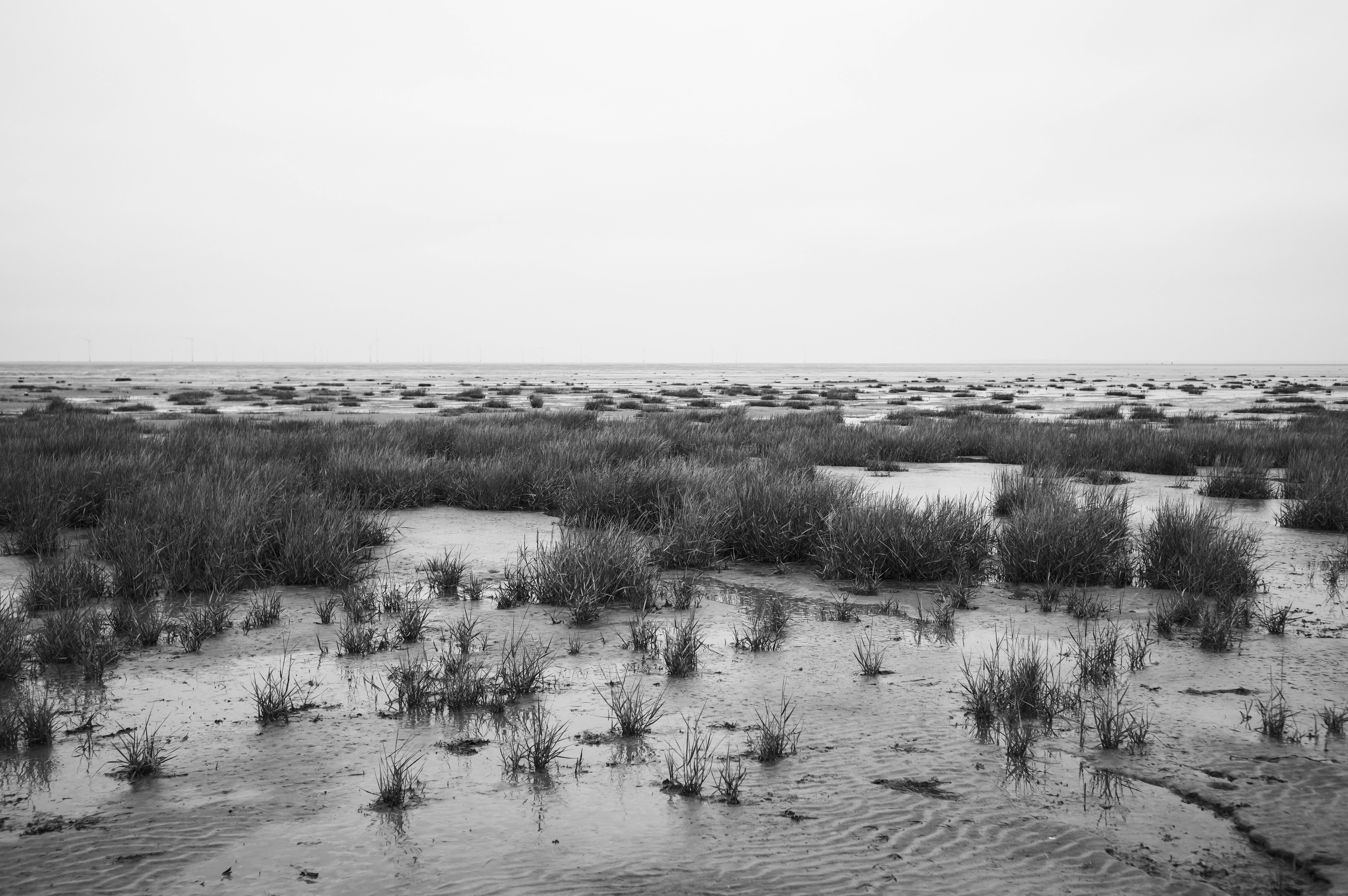

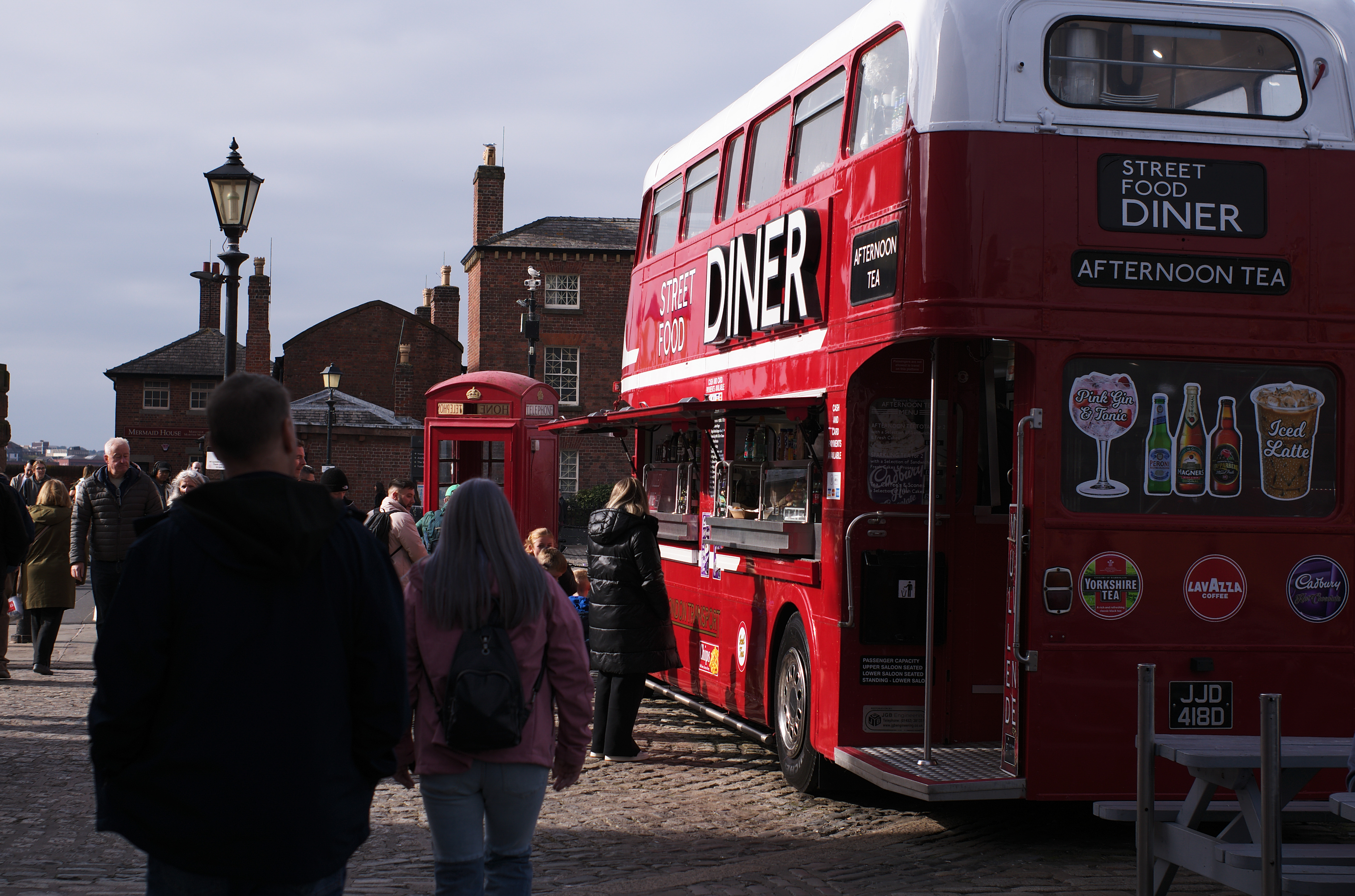

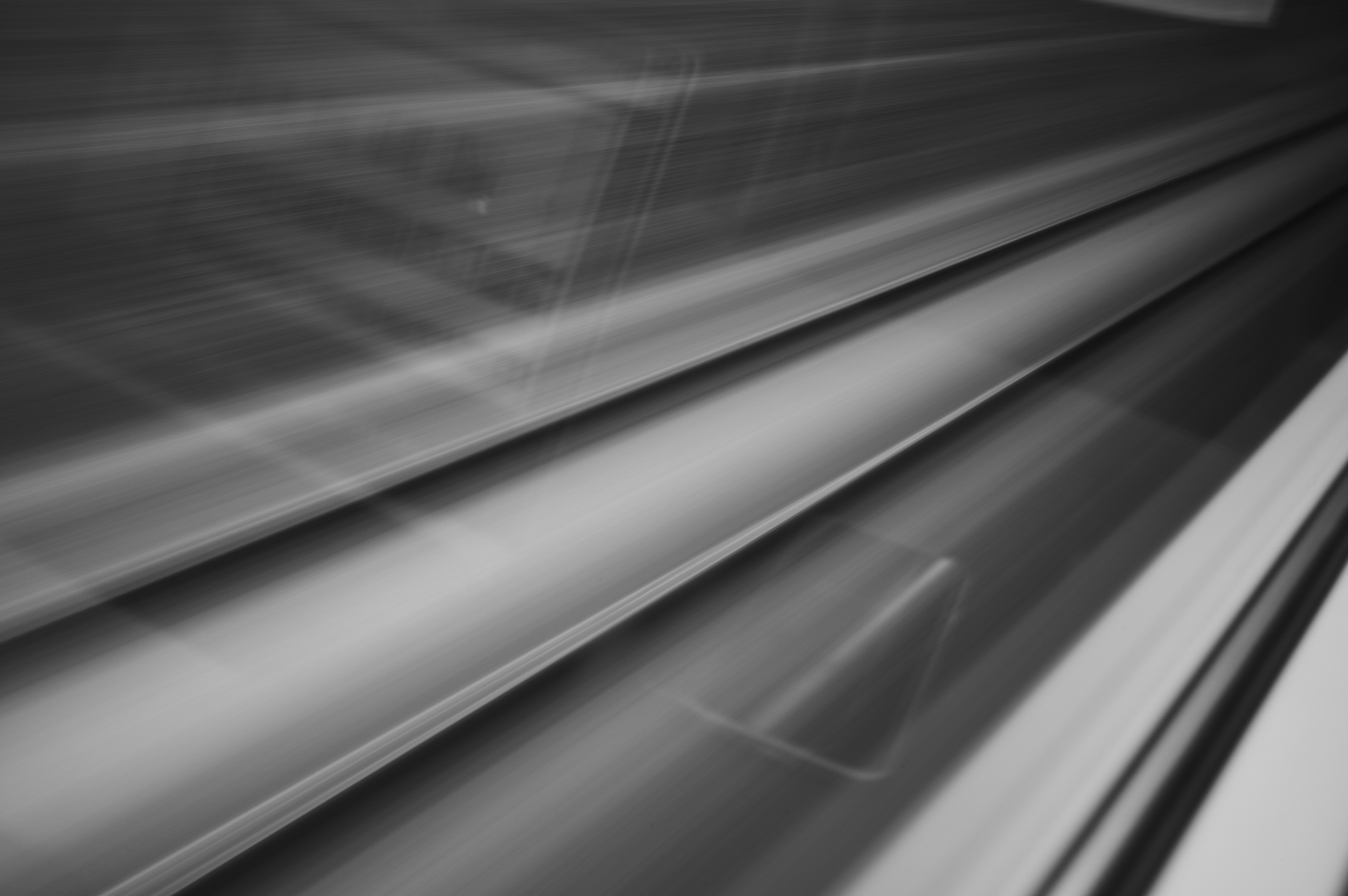
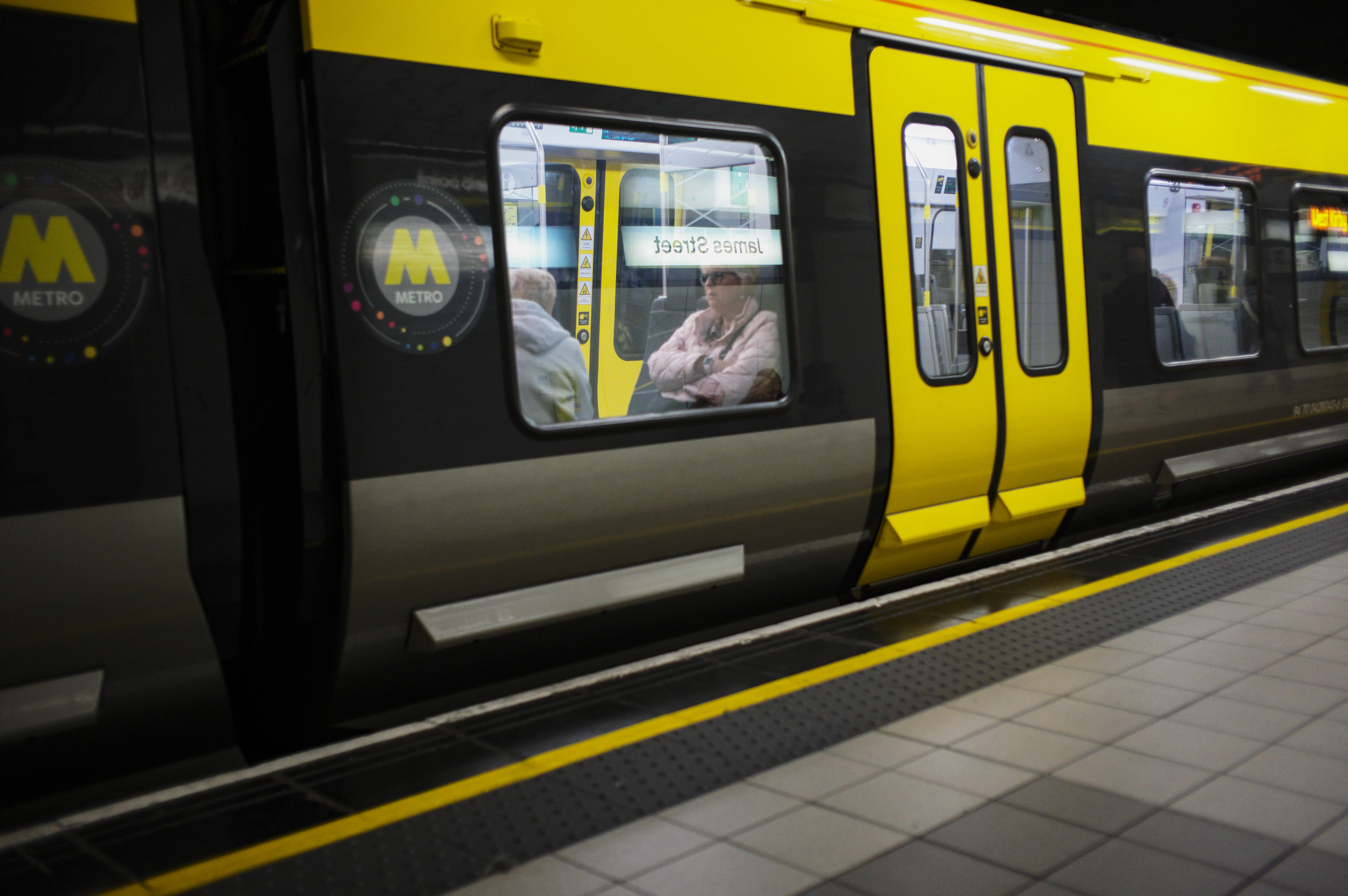

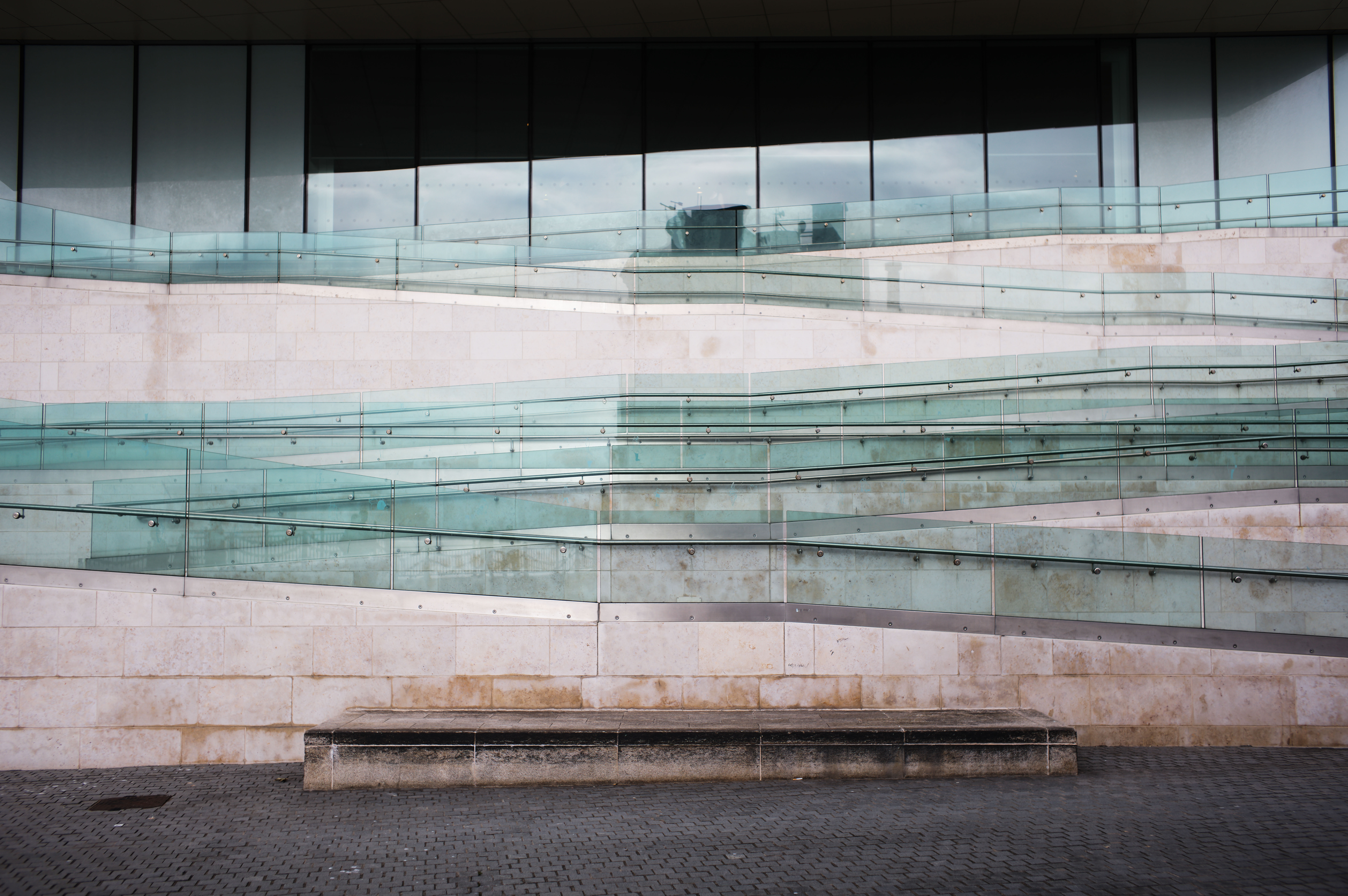
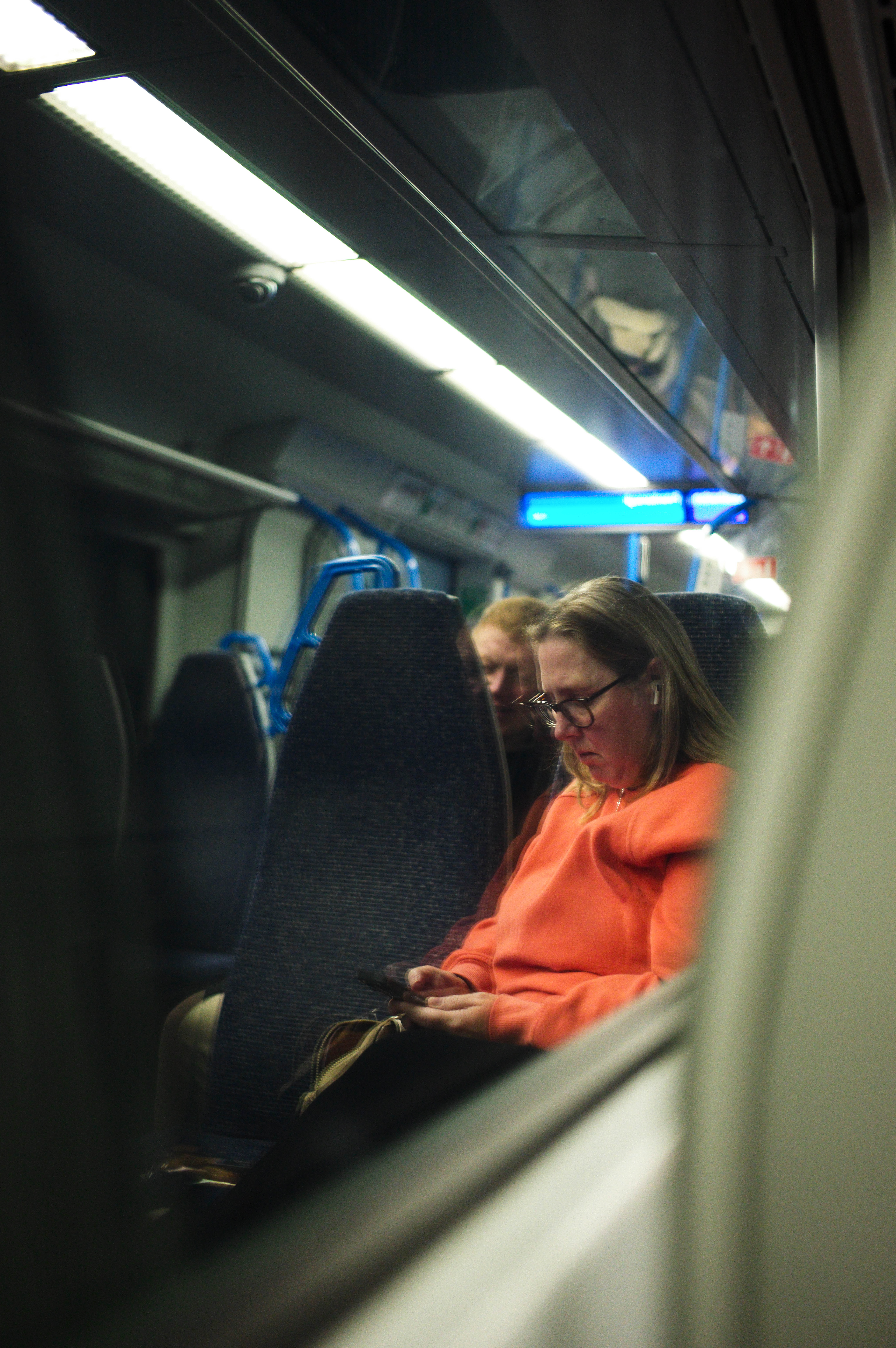
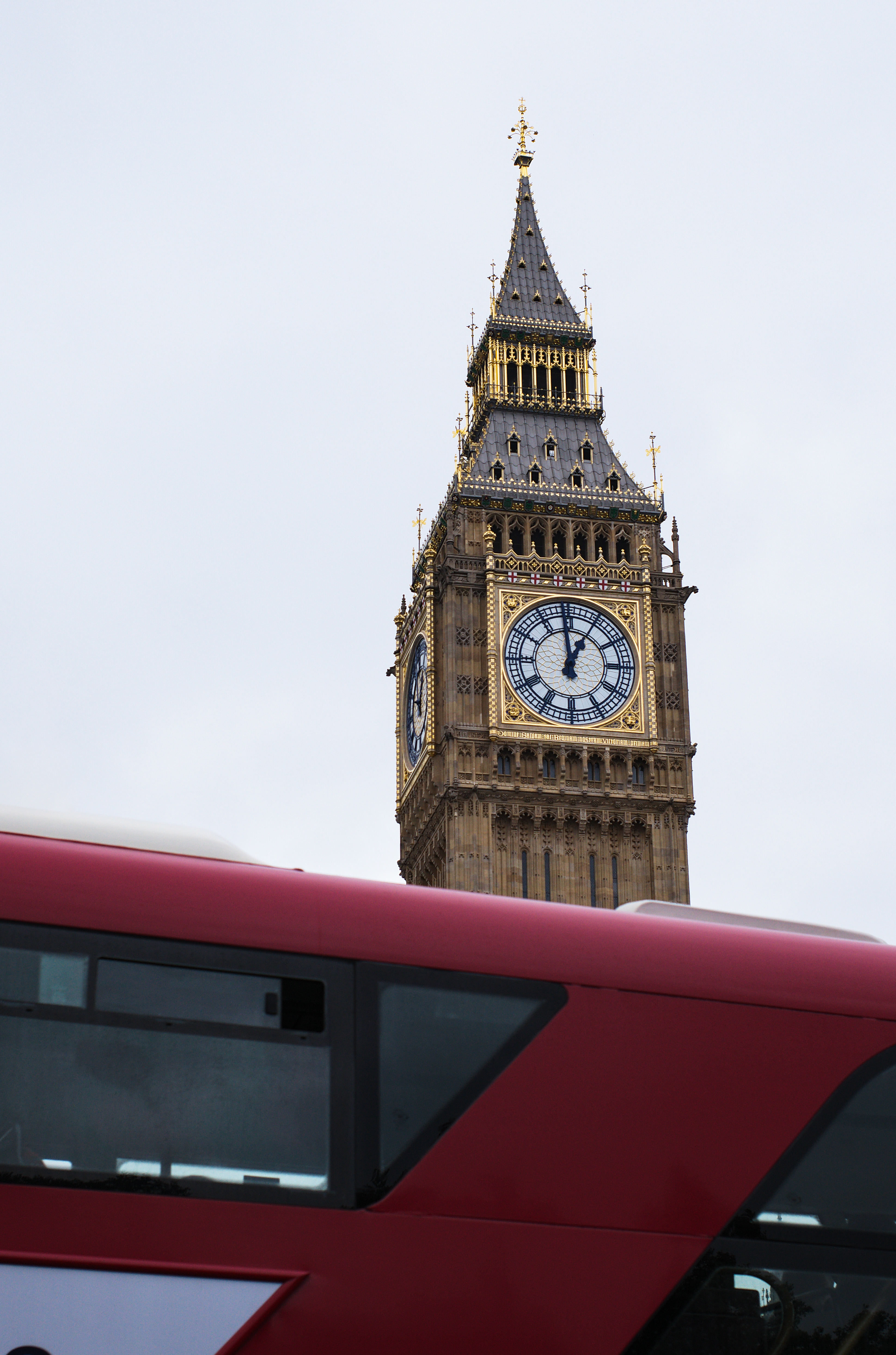
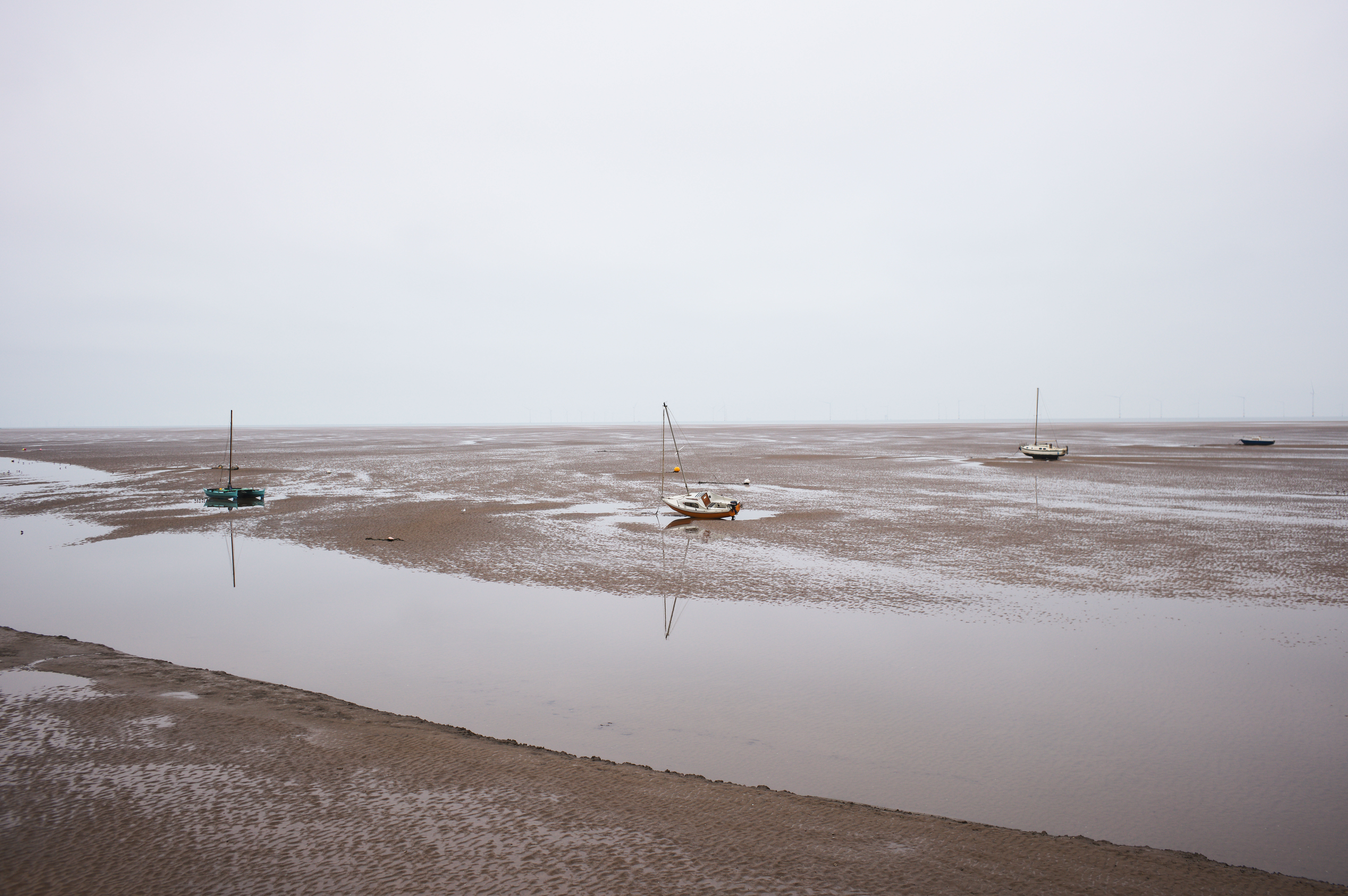
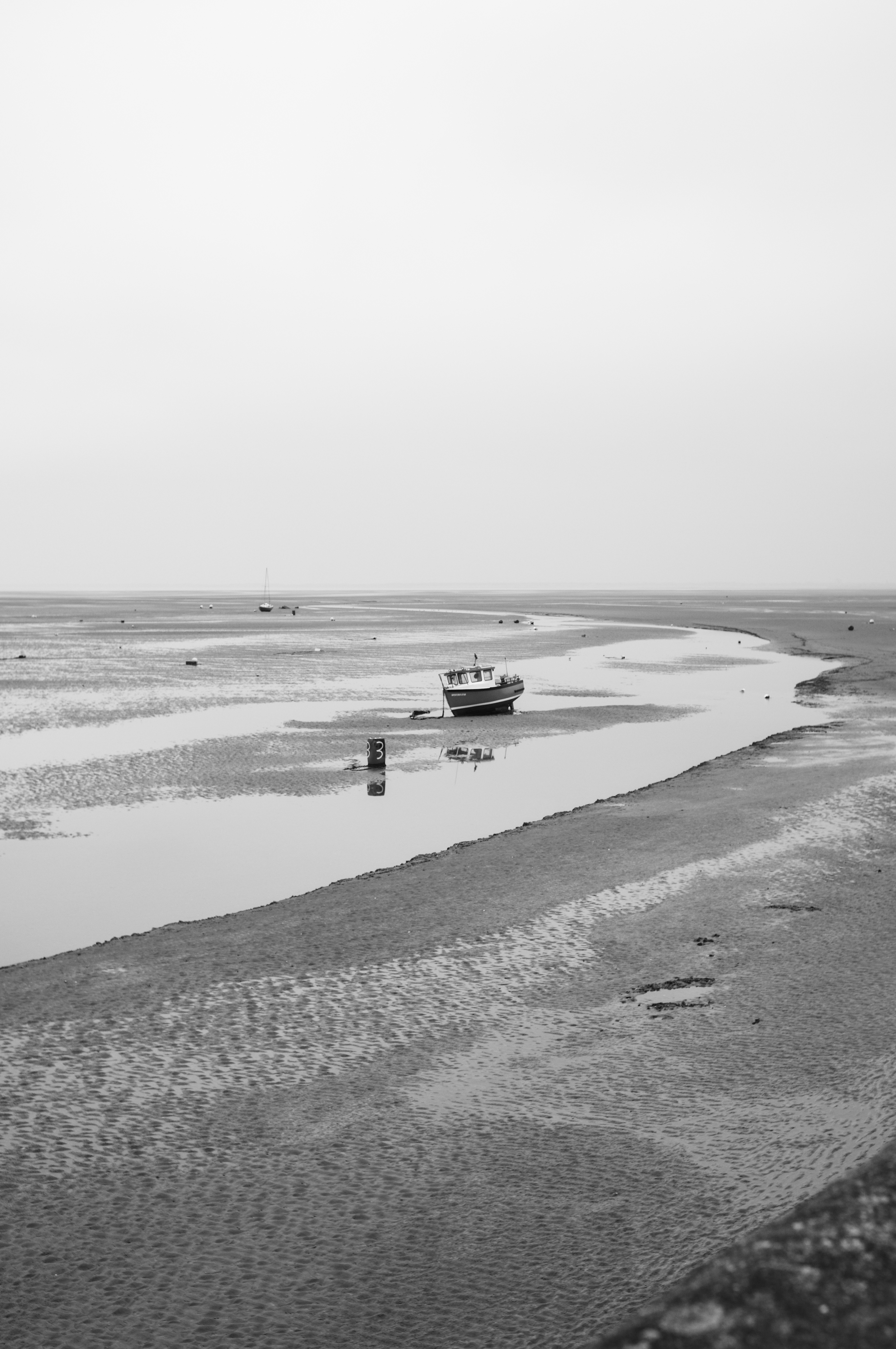
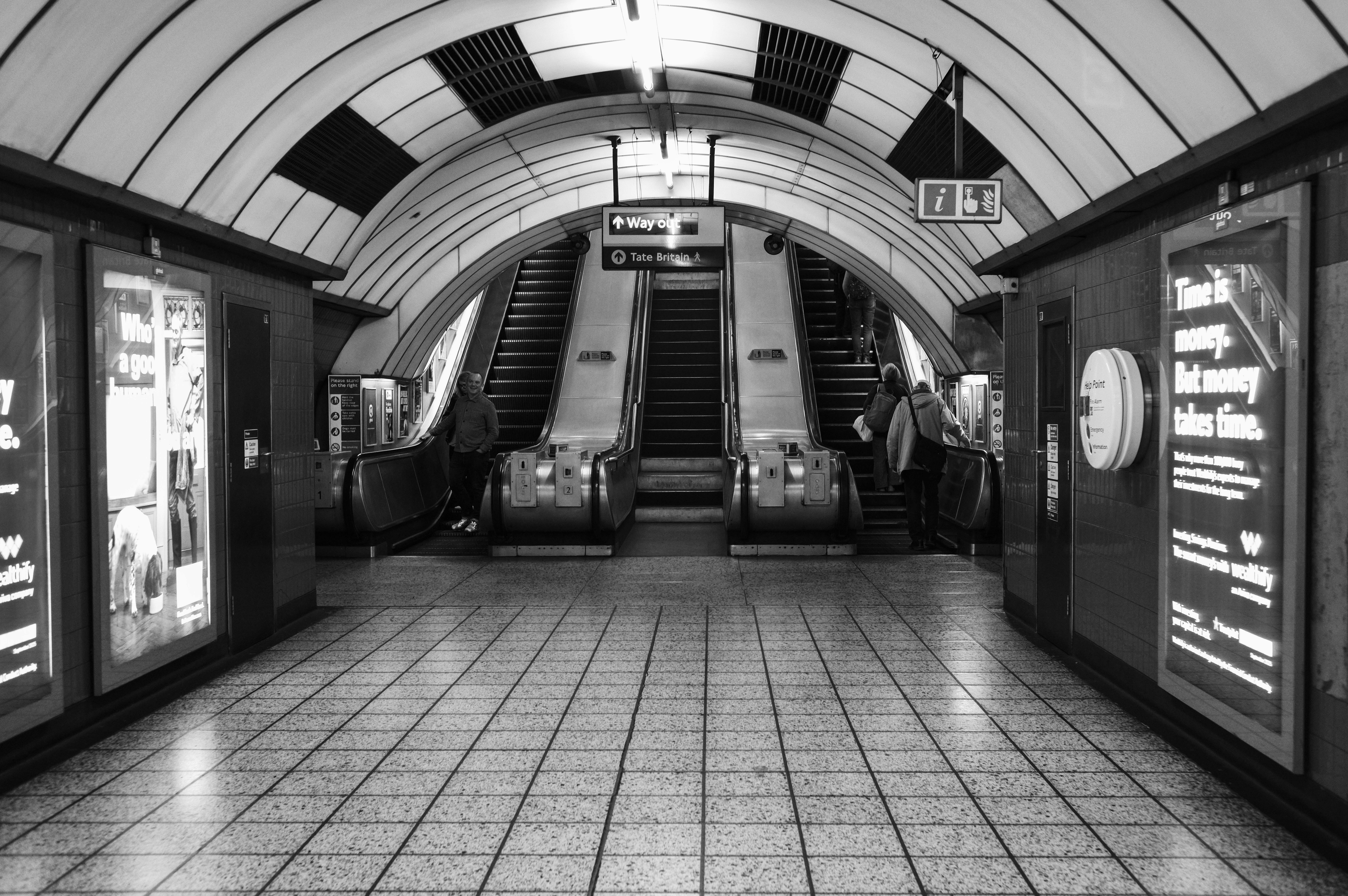
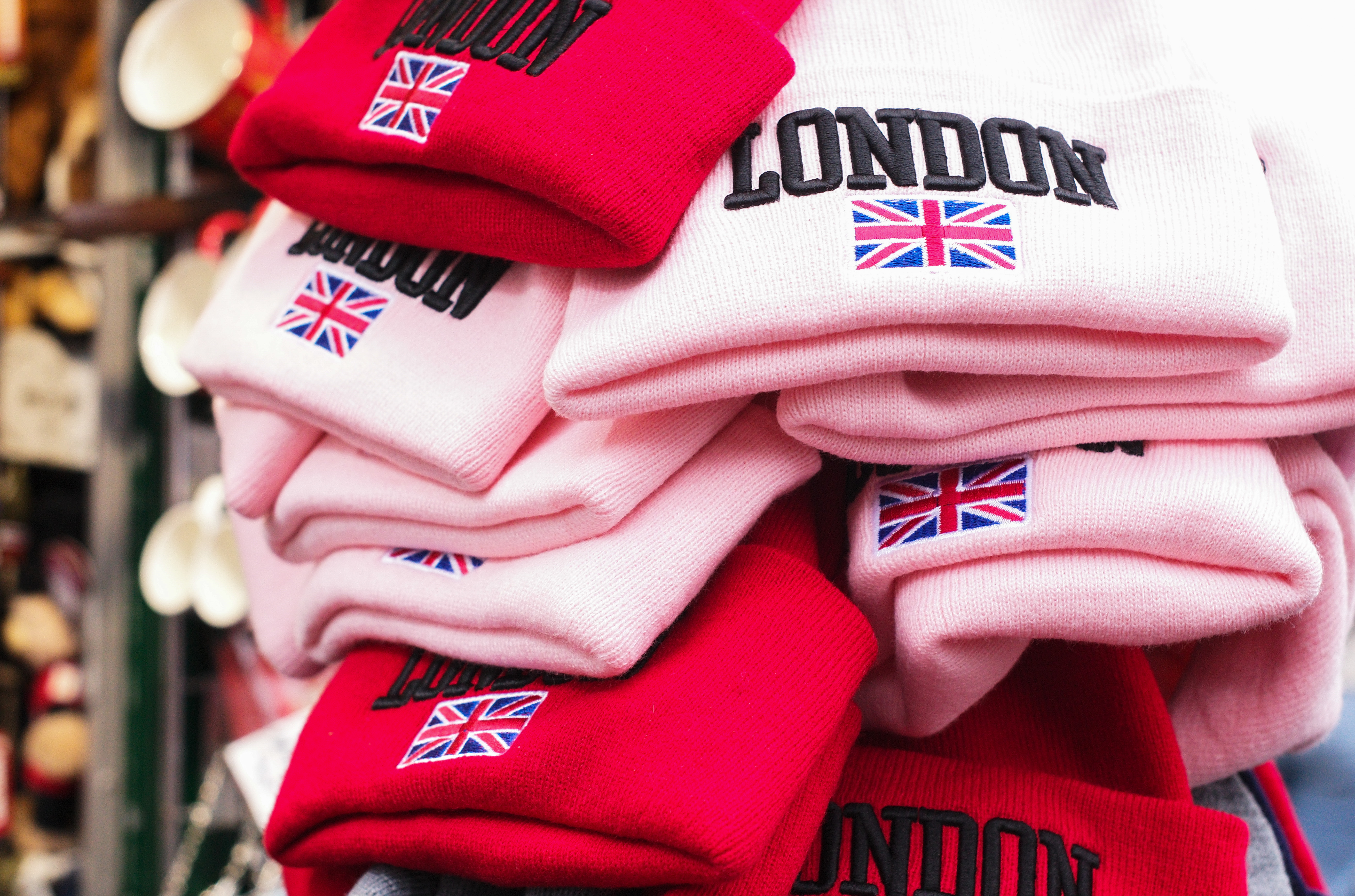

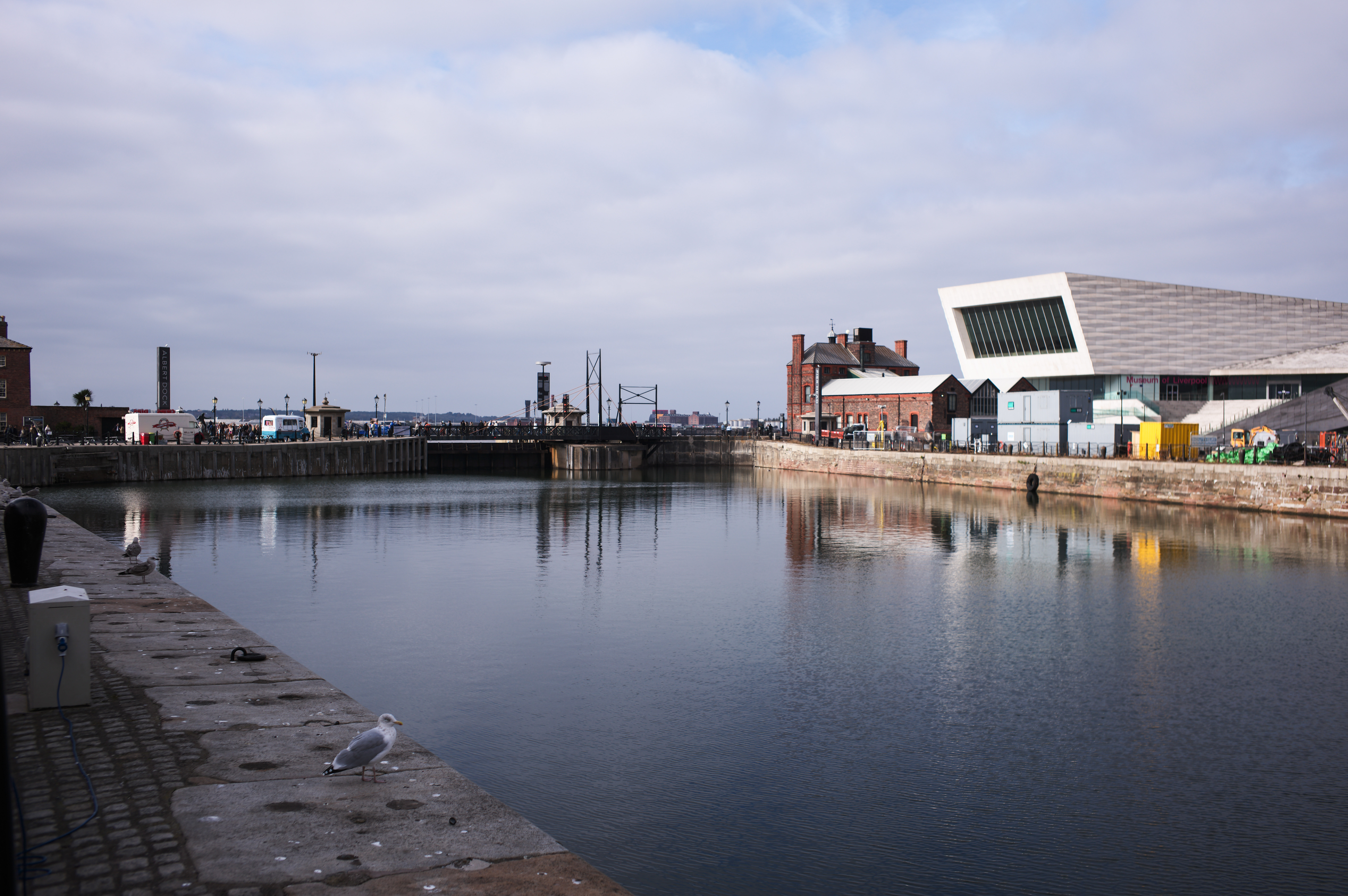
Leica M EV1: Lab results
Obvious rivals to the M EV1 are few and far between - Leica M cameras occupy an exclusive niche. But to at least give some context to the M EV1's lab results, we've compared it with another compact 60+MP mirrorless camera, the Sony A7CR (we've not actually lab tested an A7CR, but we have tested the A7R V on which it's based). The Sigma BF is another niche camera which, like the M EV1, will appeal to those who value style and exclusivity. We're also including the Fujifilm X100VI as a prime example of camera that places user creativity center stage.
We test resolution using Imatest charts and software, and dynamic range and signal-to-noise ratio with DxO Analyzer.
Resolution (line widths/picture height):
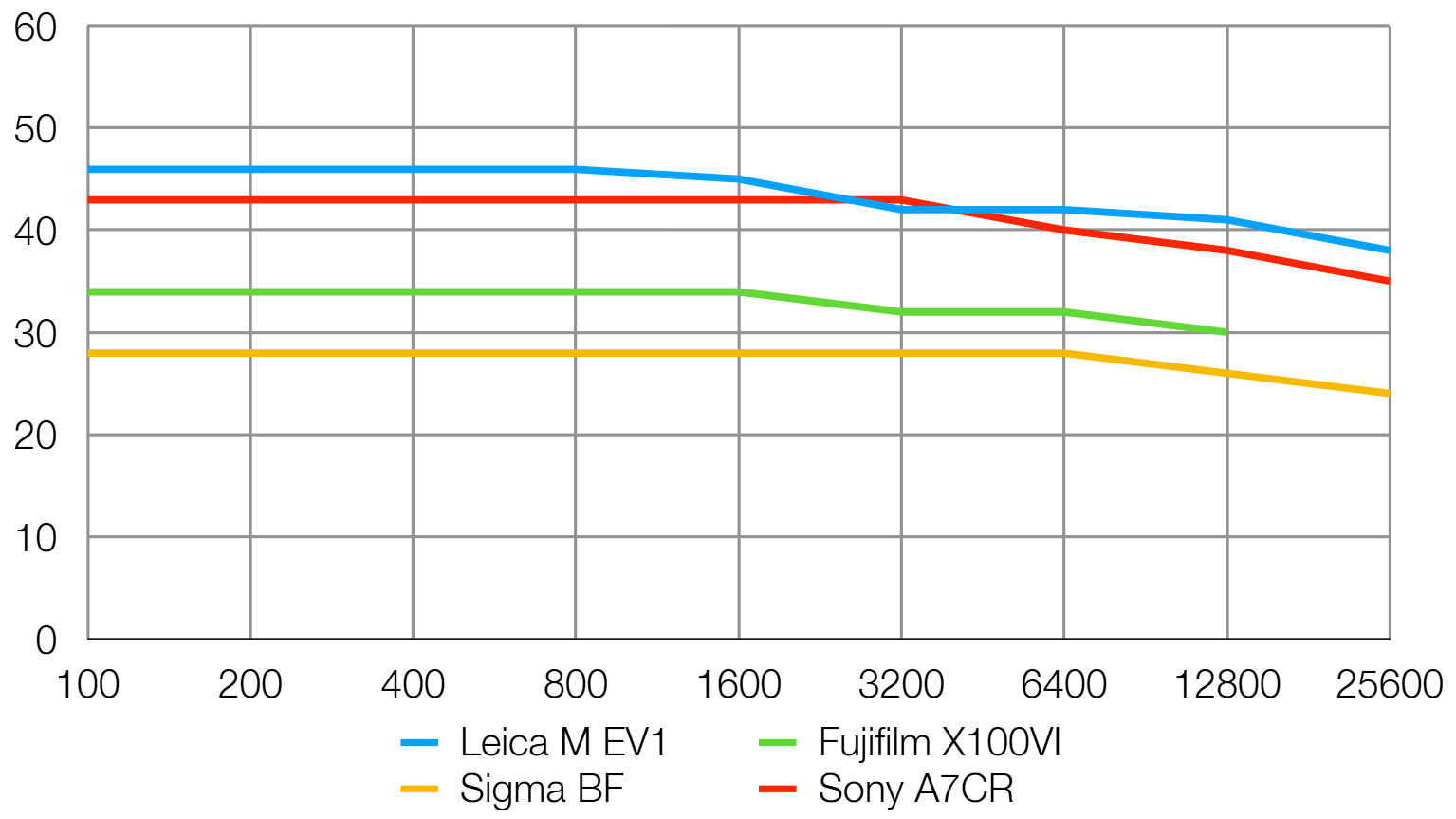
With megapixel counts in excess of 60MP, the Leica and Sony cameras were always going to come out on top when it comes to resolving fine detail.
Signal to noise ratio (decibels):
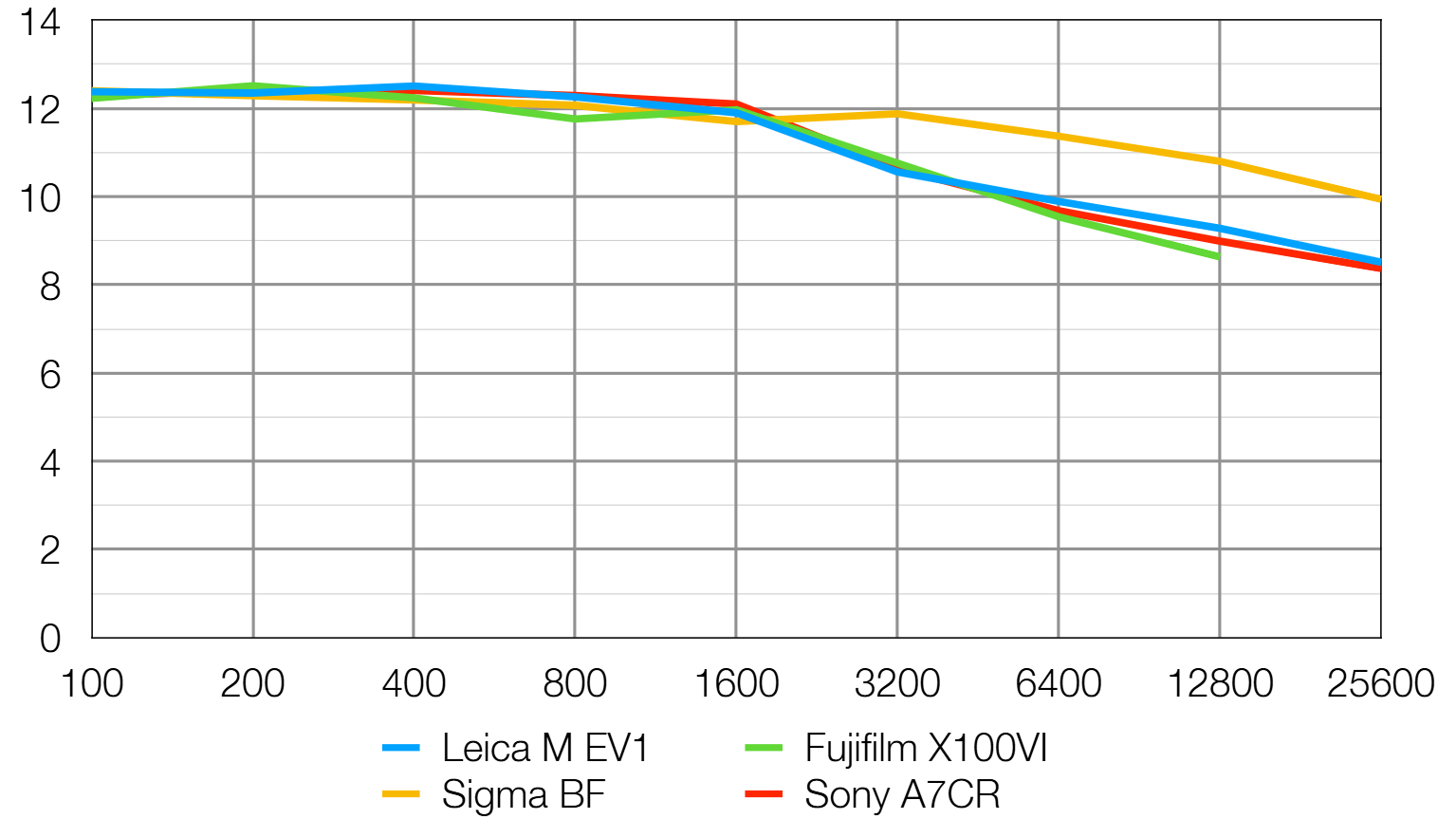
The M EV1 is very closely matched with the Sony and Fujifilm cameras when it comes to capturing dynamic range. The Sigma BF is in a class of its own for low light dynamic range though - that's the payoff from having a lower megapixel count and therefore physically larger, more light-sensitive pixels.
Dynamic range (EV):
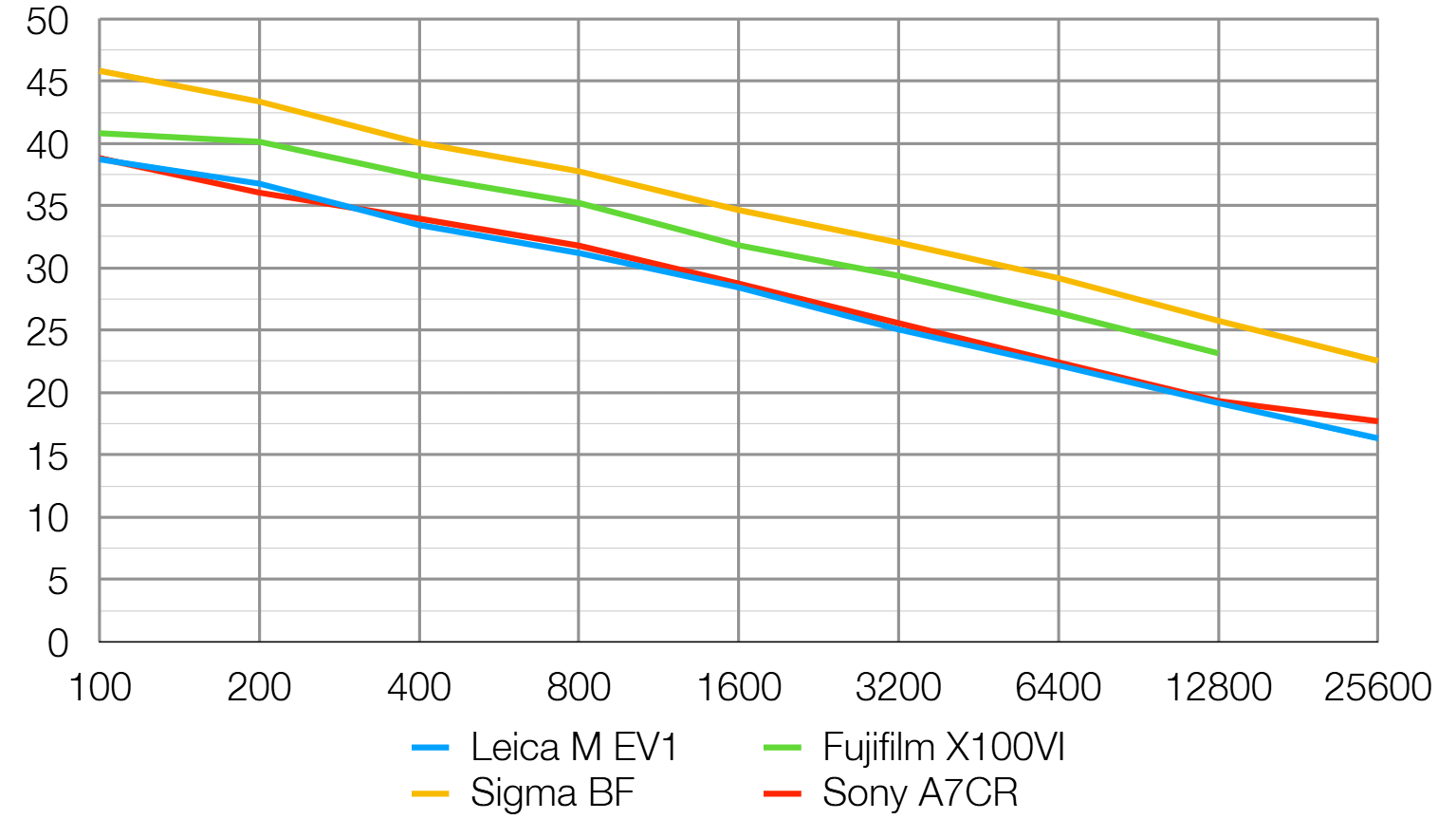
This test compares the amount of random noise generated by the camera at different ISO settings as a proportion of the actual image information (the 'signal'). Higher values are better and we expect to see the signal to ratio fall as the ISO is increased.
This is a perfect demonstration of how a higher megapixel count isn't always a good thing. The more pixels you cram onto a sensor, the smaller each individual pixel must be, and the less light it's able to gather in a set time frame. This in turn makes it more susceptible to generating image noise, and so we see the 60.3MP Leica producing noticeably noisier images at all sensitivities than the 24.6MP Sigma BF.
Leica M EV1: Verdict
The Leica M EV1 might prove to be a little controversial to diehard Leica fans, but it's an alternate take on the M11 that, I think, for some users, will be the better option.
Optical viewfinders certainly have their place for a lot of street photographers, but I think the benefits of an EVF weigh out. The ability to focus perfectly is made much easier by the 5.7m-dot screen with up to 1.8x magnification – essential to so many photographers with poorer vision – and exposure compensation can be seen live in the viewfinder.
Images themselves are every bit as good as Leica’s other M cameras, with the same 60.3MP sensor providing excellent sharpness, reliable and accurate colors, great dynamic range, and alongside M-mount lenses – Leica’s distinct look. The camera is also as luxurious and beautifully designed as ever, although I still find the minimal grip isn’t as comfortable for a long day as I’d hope.
My only lingering doubt is whether this is a worthwhile purchase over a Q3, which features an EVF, the same sensor, but so much more with autofocus, video and image stabilization, for a lower price. How much the Leica M EV1 will appeal to you really depends on how much you want to switch out lenses or value the simplicity of the more stripped-back M shooting experience.
Features | Excellent high-resolution sensor, but lacking in modern features, including video, image stabilization, and autofocus 3.5 |
Design | Beautiful and luxurious design, but handling can be a little uncomfortable for long periods 4 |
Performance | Photos from the 60MP photos are stunning with signature Leica colors and style 4.5 |
Value | An incredibly premium feeling hand-assembled camera is the height of luxury, but commands a price that reflects that 4 |
Overall Verdict | ★★★★☆ |
Leica M EV1: Alternatives
The Leica M11 is the latest generation of Leica’s legendary line. It shares the same sensor, processor, lens mount, and design as the M EV1, but features a proper optical rangefinder design – which, for some street photographers, will be a necessity.
Read more: Leica M11 review
The Leica M11 Monochrom is basically the exact same camera as the M11, but it’s sensor is developed to only shoot in black and white – a design that allows for higher quality results than converting color photos. It's a big decision to make, but if you are a B&W fanatic, then this is the M11 to get.
Read more: Leica M11 Monochrom review

Gareth is a photographer based in London, working as a freelance photographer and videographer for the past several years, having the privilege to shoot for some household names. With work focusing on fashion, portrait and lifestyle content creation, he has developed a range of skills covering everything from editorial shoots to social media videos. Outside of work, he has a personal passion for travel and nature photography, with a devotion to sustainability and environmental causes.
You must confirm your public display name before commenting
Please logout and then login again, you will then be prompted to enter your display name.
